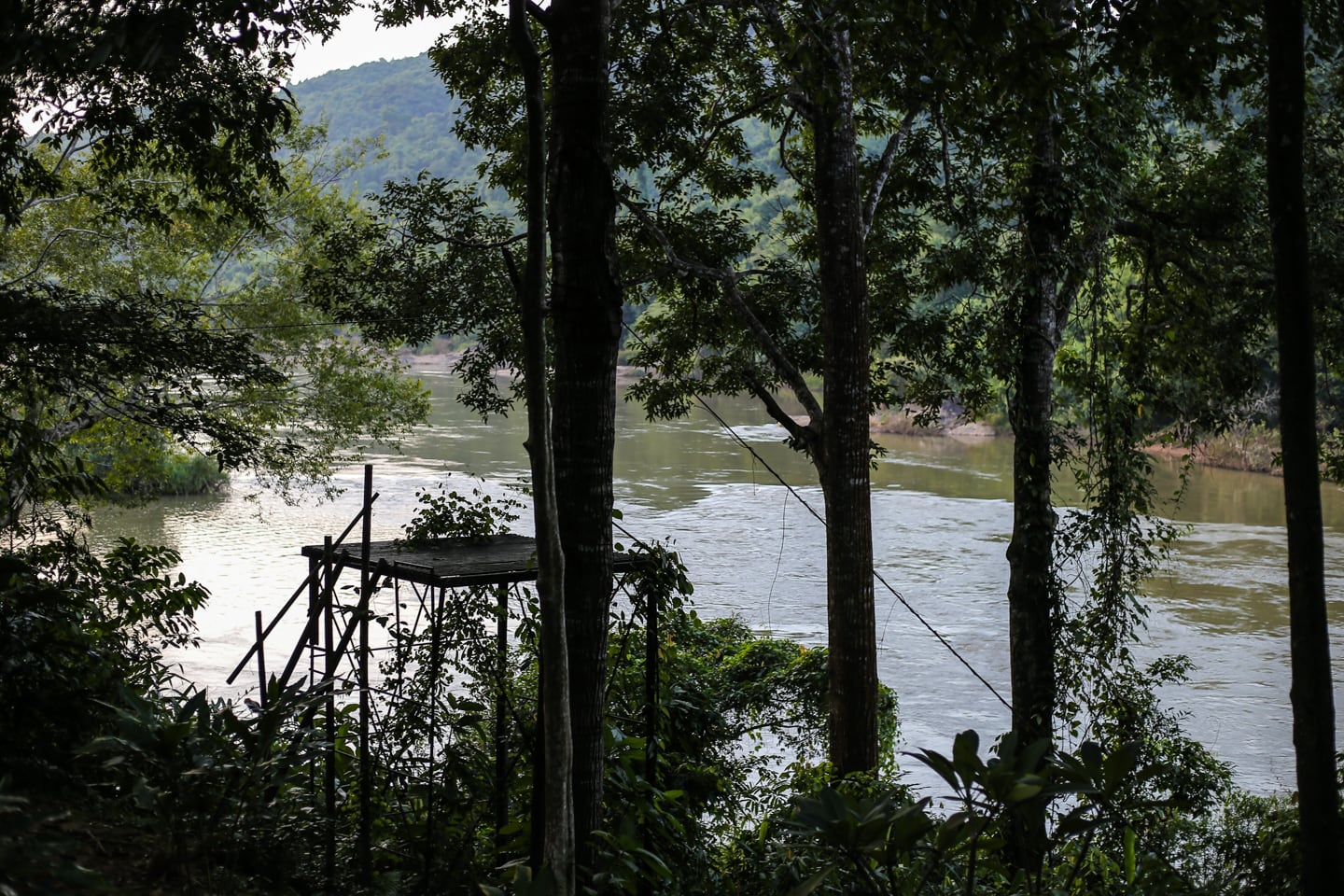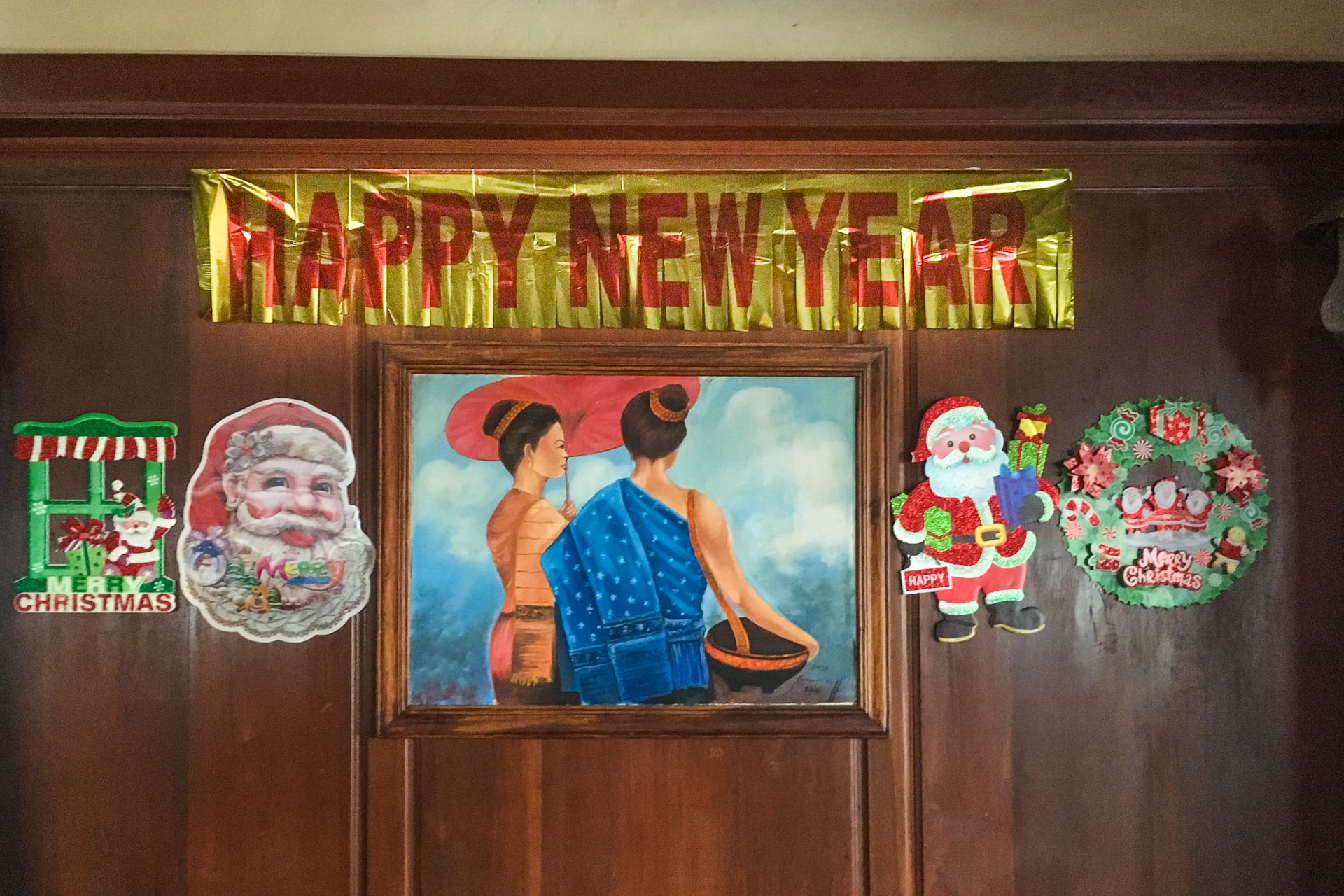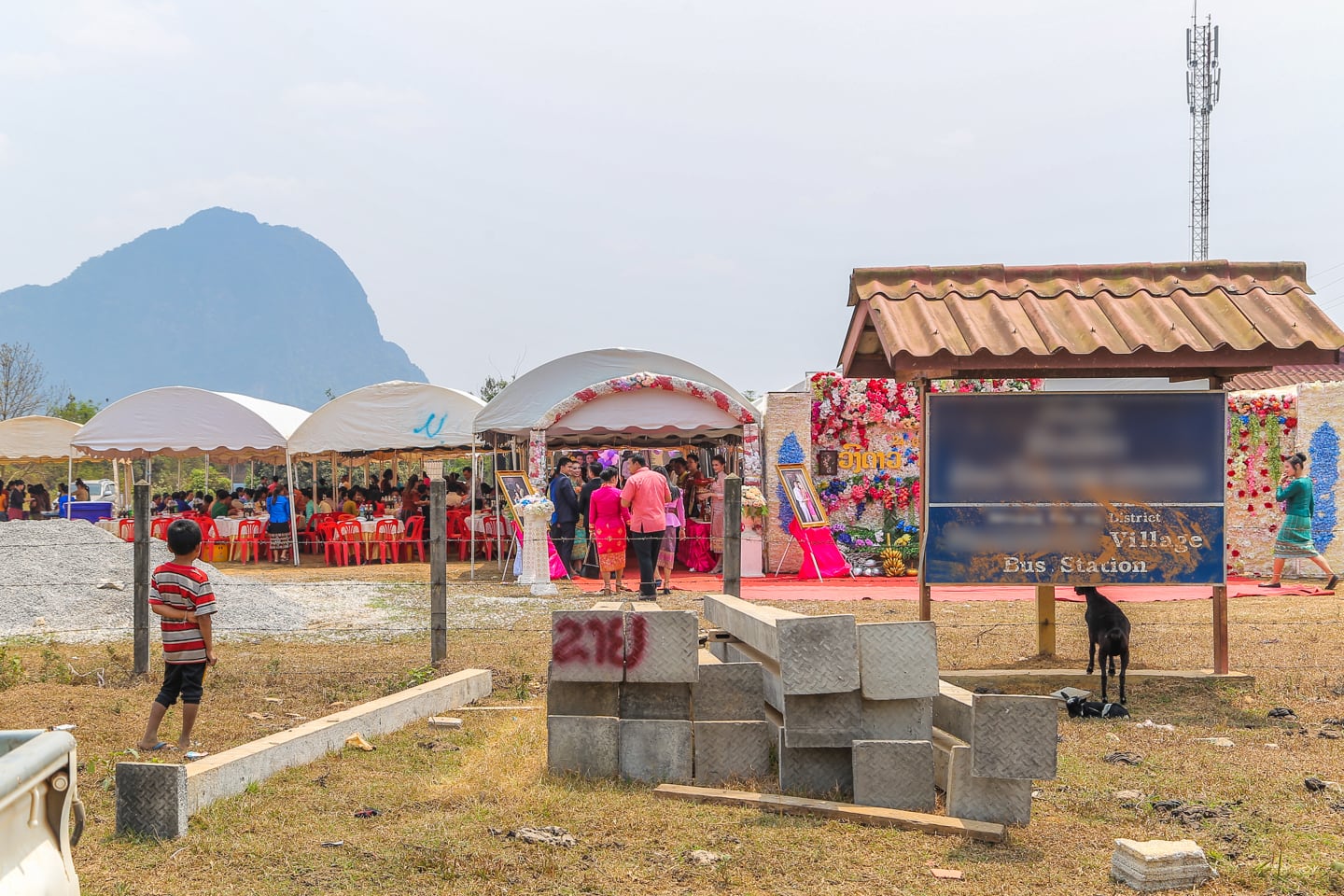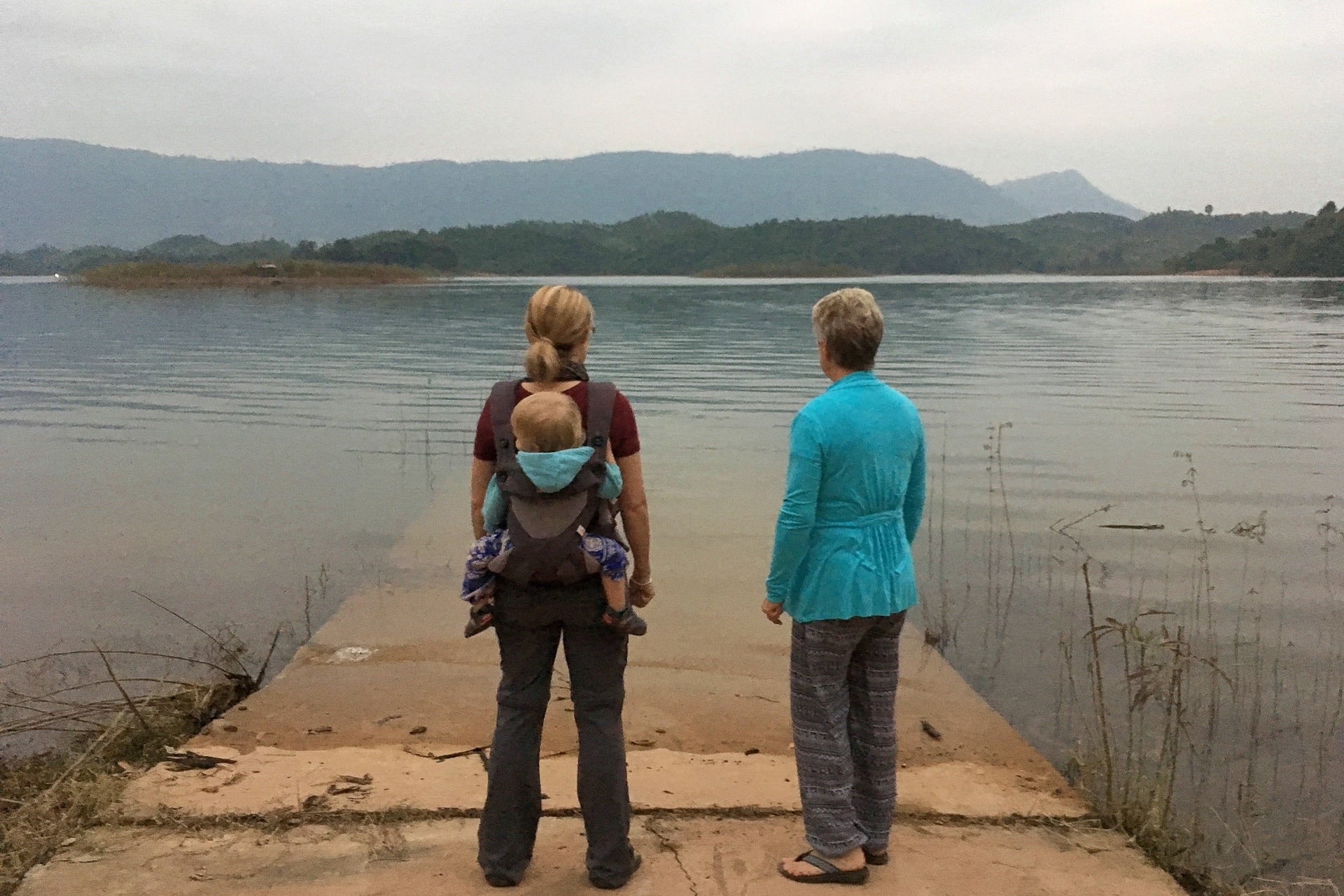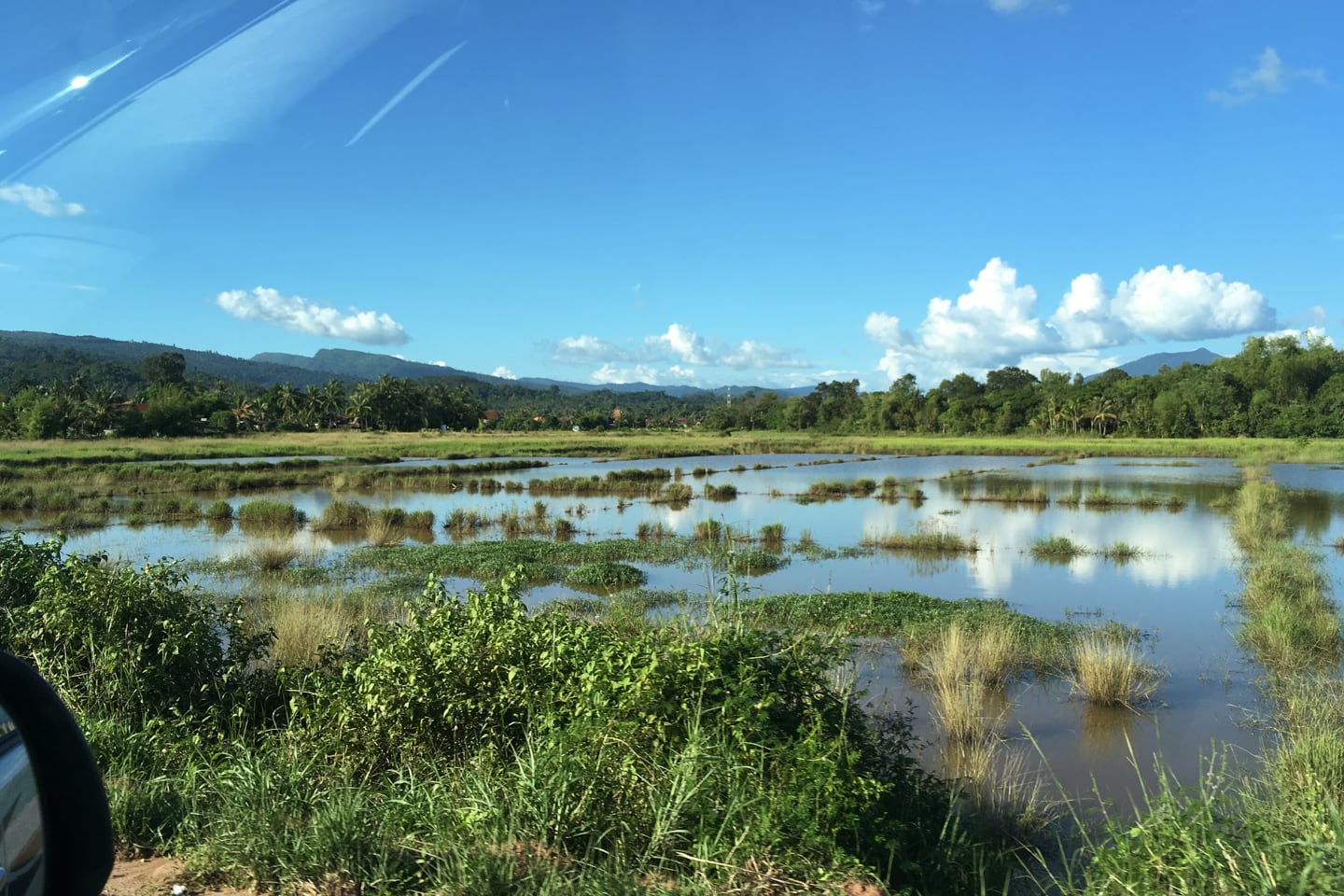
A while back, Lori received word that a friend she hadn’t seen since college was going to be visiting China and was toying with the idea of tacking on an extended weekend in nearby Laos. We welcomed the idea of hosting her, of course, and it went on the calendar.
Knowing that Britta didn’t have a lot of time in Laos, we wanted to show her our adoptive home of Vientiane, while also offering a glimpse of rural Laos in 1-2 days. We’ve wanted a chance for some time to stay at Nam Lik Eco Village and, given it’s proximity to Vientiane and rustic feel, it seemed to fit the bill nicely.
The drive from Vientiane to Nam Lik took about 2.5 hours along Road 10, our preferred route north out of Vientiane. We had had a lot of rain over the past couple of days, but the road—particularly the last mile of dirt track—was fine with a 4×4 pickup.
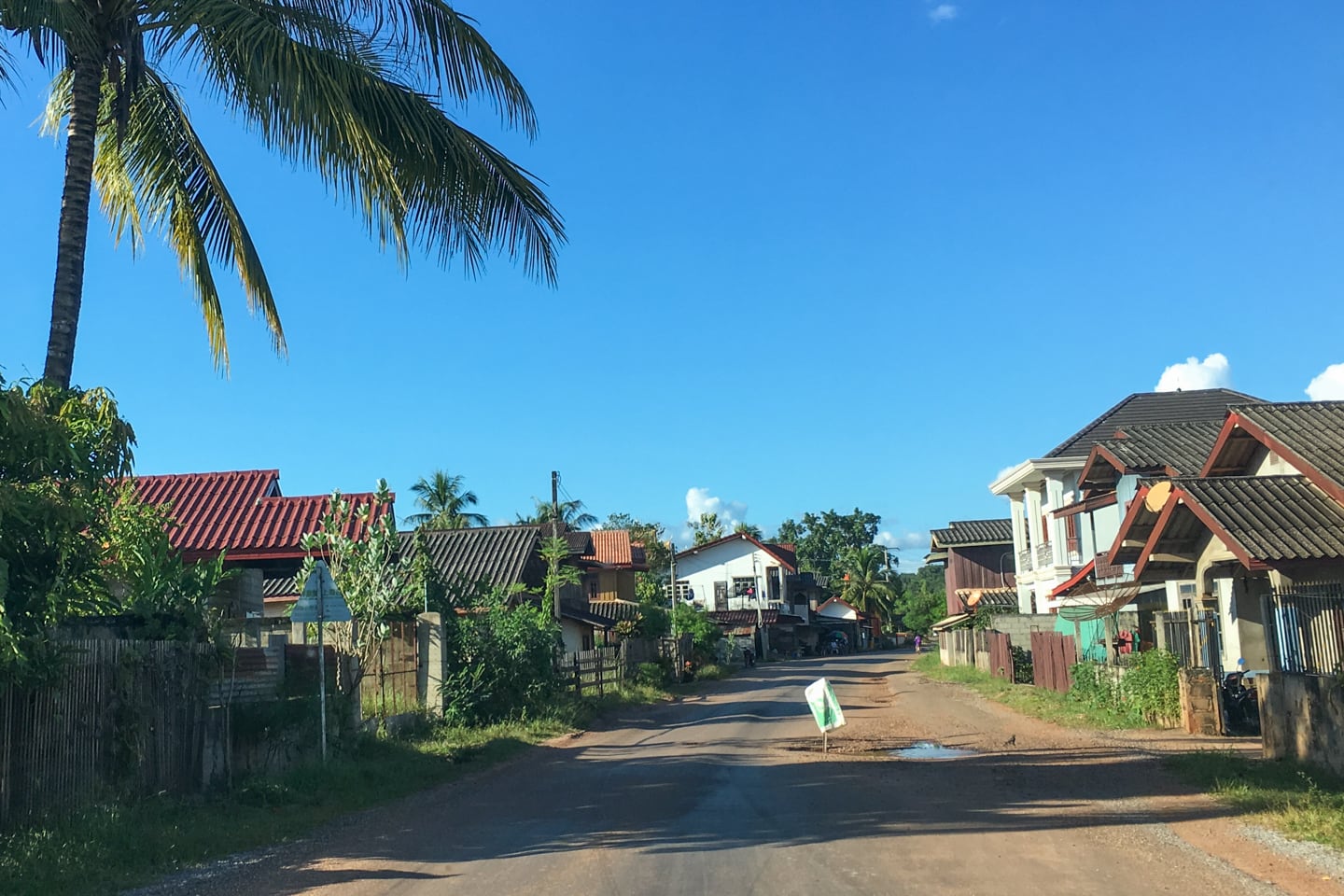
Driving the roads in Laos, you never know what you’re going to get. This otherwise well-maintained road had an obvious trouble spot, conspicuously marked with a rice bag on a stick. It may not be fancy, but I guarantee you’re not going to miss it.
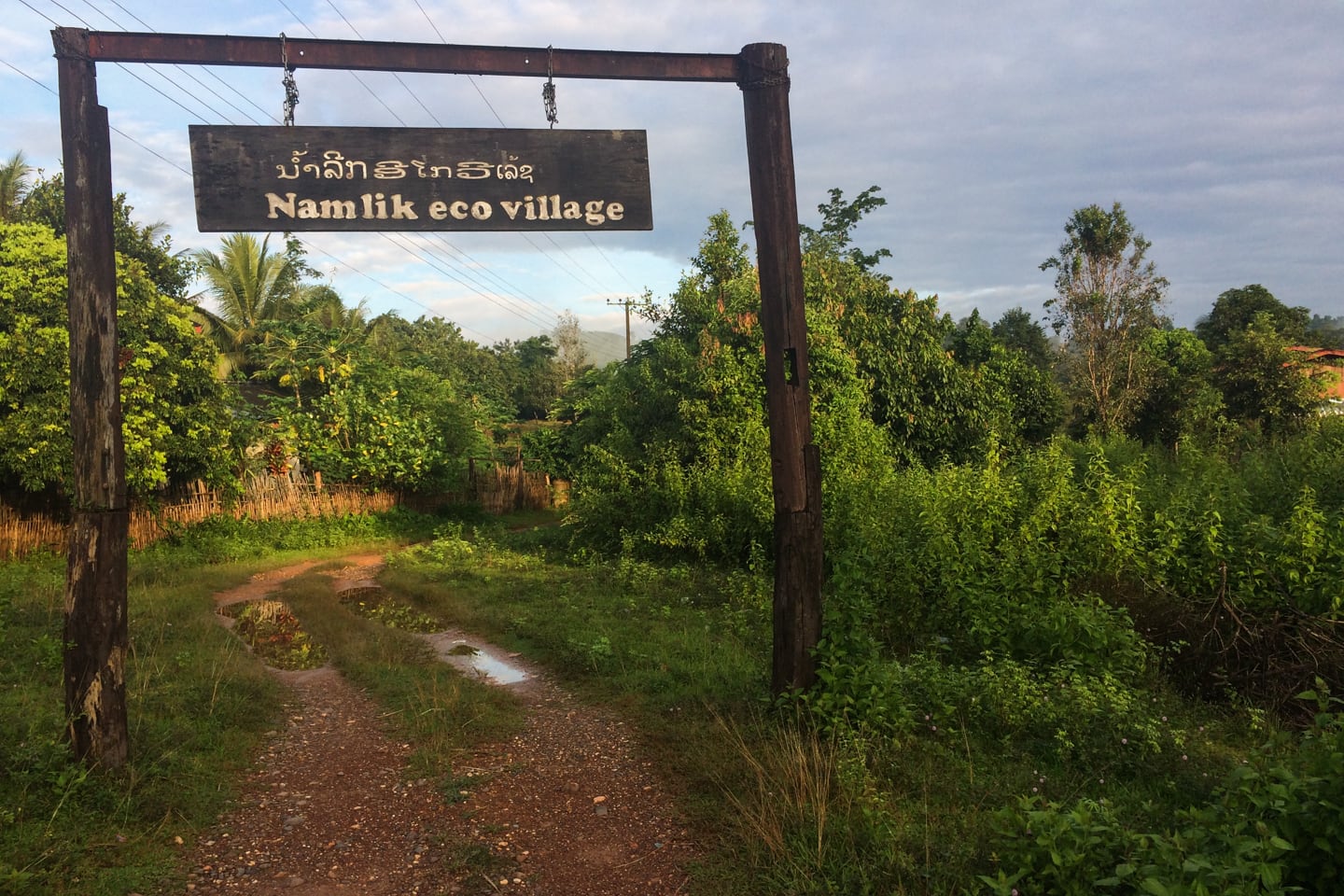
We rolled into the rustic resort (i.e. “eco village”) just before sunset. There’s not a lot of difference between sunset time on June 21 and sunset on Dec 21 in these parts, but we can tell that days are definitely getting shorter.
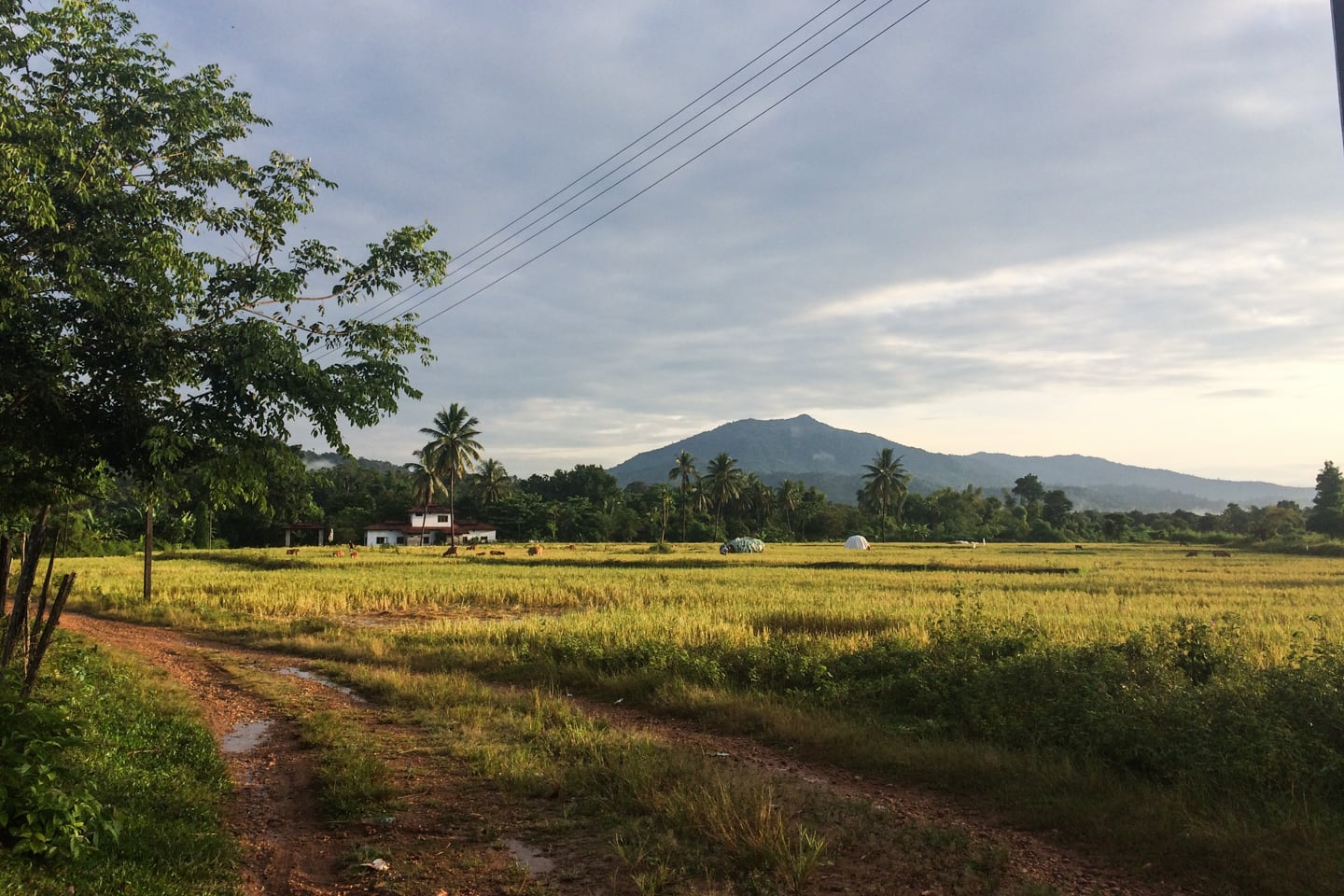
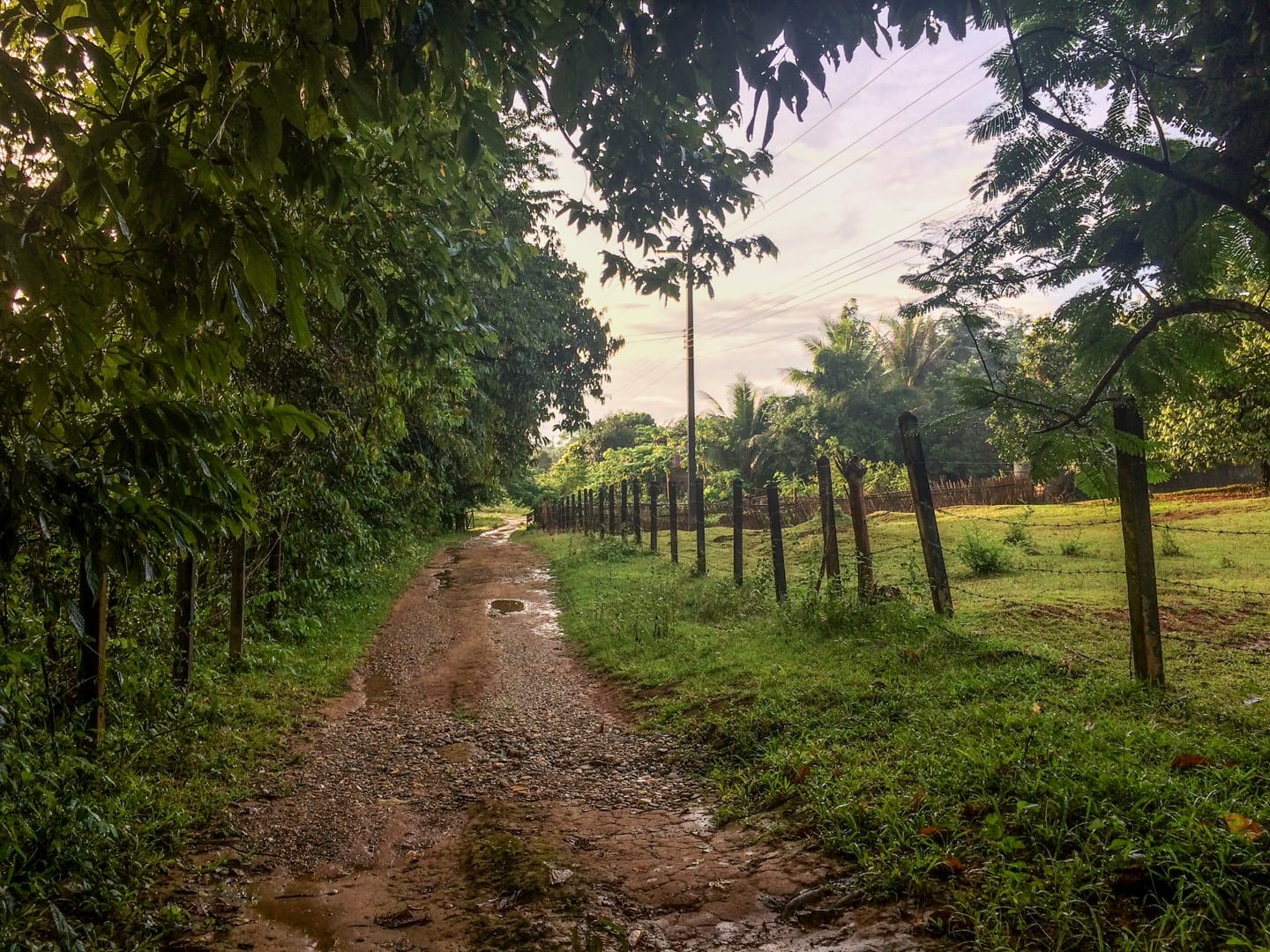
We’d been to Nam Lik the previous December on our way back from Tha Heua. It was apparent the lodge had seen better days but it was obvious the property still possessed a ton of potential. There are few places like Nam Lik perched amongst dense vegetation above a picturesque stretch of river and located so close to Vientiane. River Time comes to mind, and is also a good, rustic bet near Vientiane. But Nam Lik’s greatest strength is its location, situated amongst a vast undeveloped tract of dense secondary tropical forest and sandwiched between the Nam Lik [river] and a sprawling little lake.
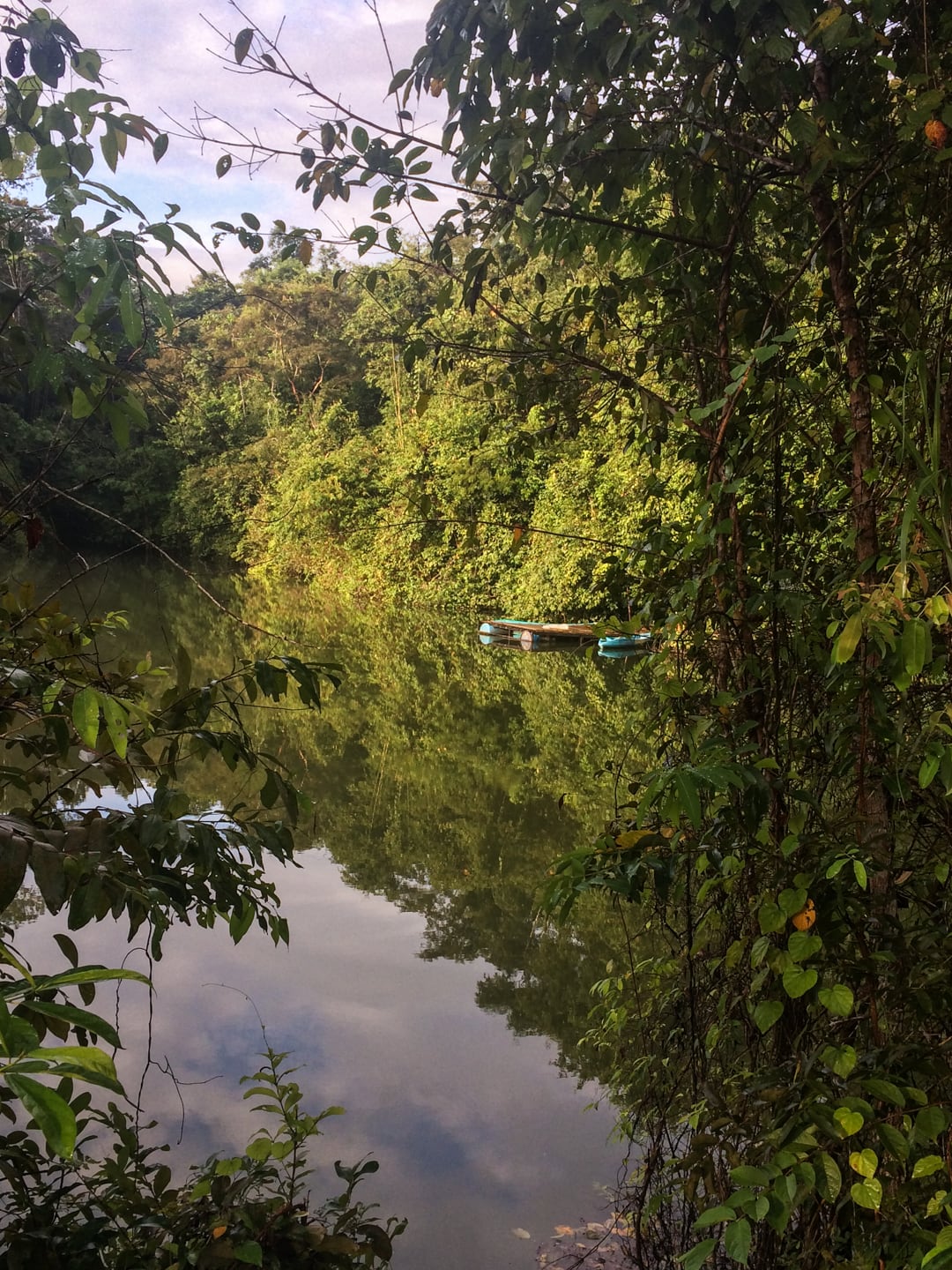
It’s second greatest strength is the quirky and rustic character of the lodge itself.
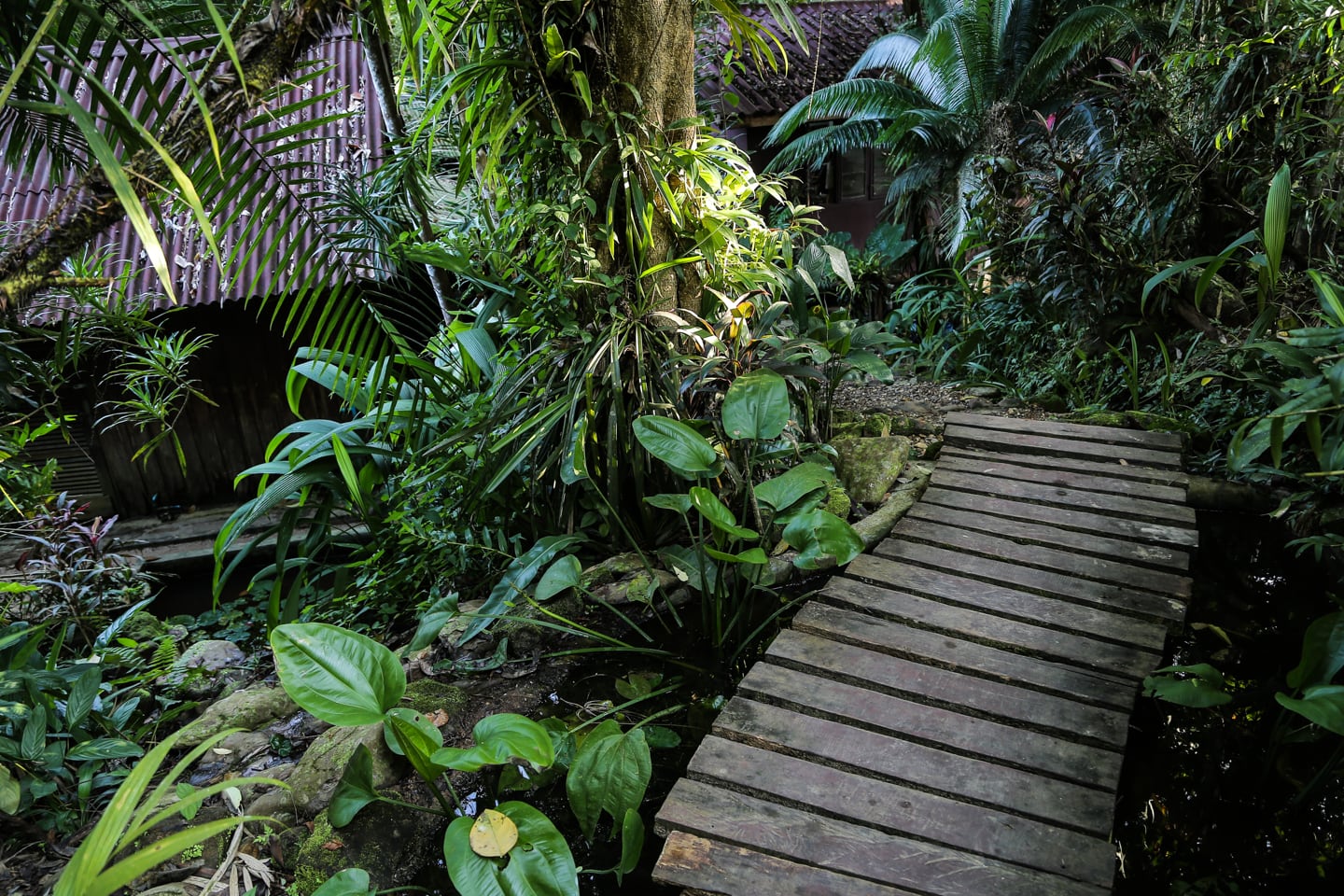
From the parking area, the reception and dining area is accessed by a path cutting through the dense vegetation—a fitting welcome to this funky property.
Pinned on the wall of the reception area is a satellite photograph denoting the various outdoor activities available in and around the property, from kayaking (both on the river and the lake), hiking, mountain biking, and at one time, even zip lining (though it appears most of the zip line network is not in an operable state).
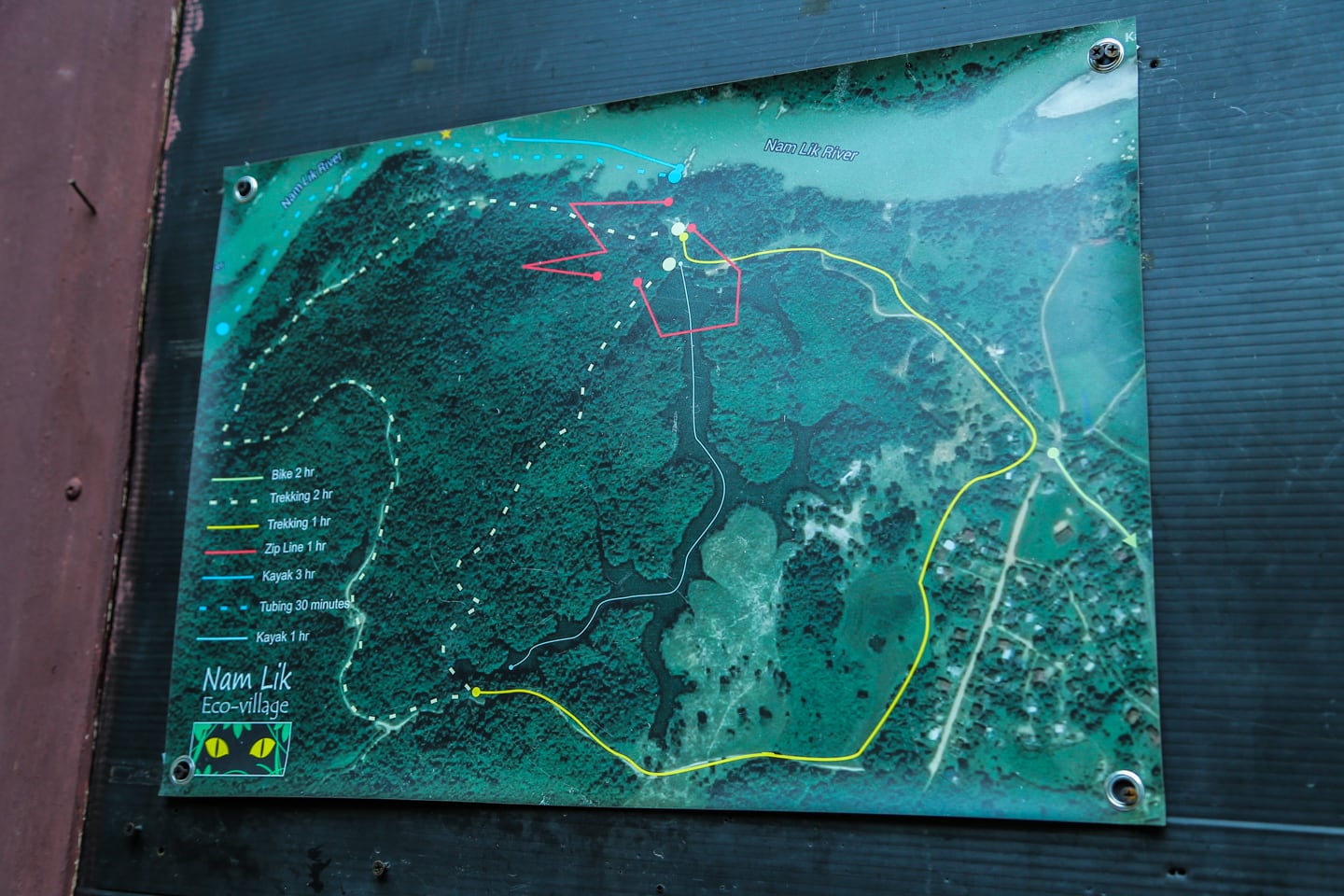
It must have been quite serendipitous for the falang eccentric who dreamed up this place to stumble upon the property and find that it was available for developing into his unique vision. I imagine it’s getting harder with each passing year to bring something like this to life.

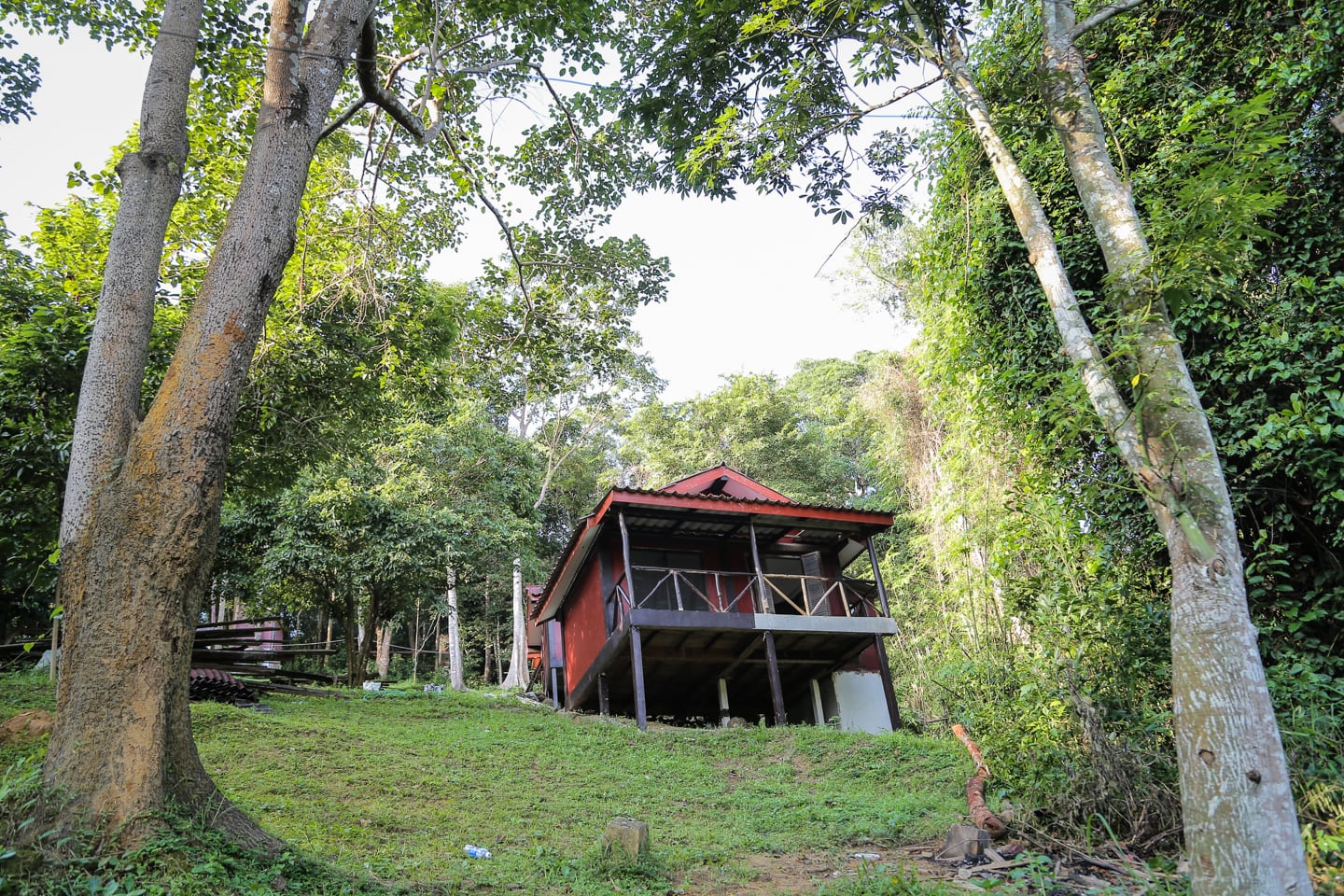
Being here conjures up memories of other one-of-a-kind places I’ve stayed—Finca Tatin in Guatemala, Byoona Amagara in Uganda, Wild Spirit in South Africa, Camp Carnelley in Kenya—in which one person’s vision transformed a stunning and unique piece of property into something truly remarkable bordering on the insane.
Madness is a key ingredient for making a property like this work. You simply can’t be in it primarily for the money or any other practical reason. There must be a dream above all else, a vision for the dream to ride on, a stubbornness to stare down the naysayers, and a perseverance to push through tough times (which is inevitable with such properties).
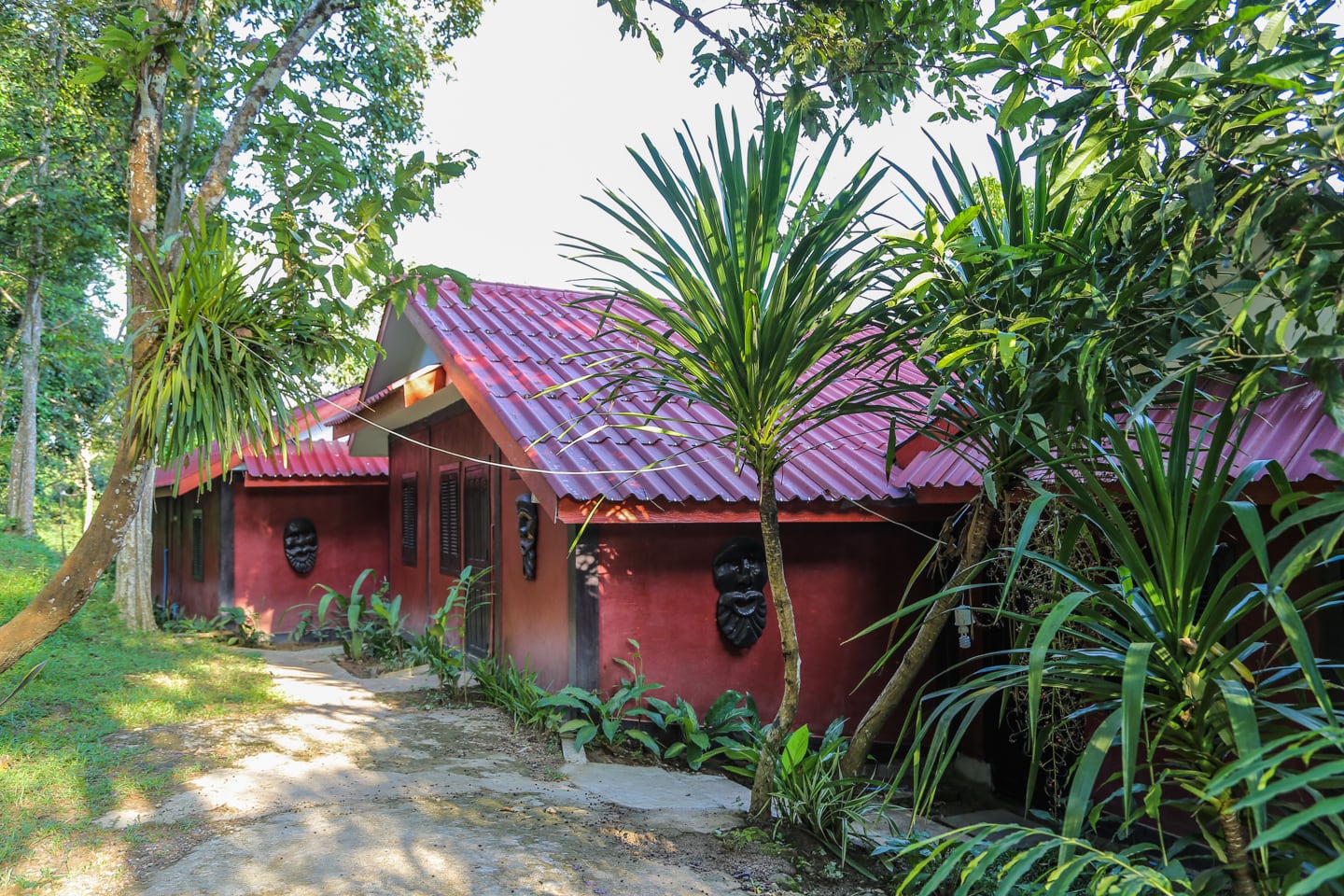
Places such as these easily constitute our favorite stays in all our travels—more than any swanky international hotel or resort ever could. It’s the story, the struggle, the dream—the beating heart and soul at the center of the madness that makes these sorts of places what they are—though, a beautiful, natural backdrop is also a necessary ingredient.
If I’ve ever had one singular and consistent pie-in-the-sky dream it has been to one day be in a position to be that madman, and most crucially, be released on some peaceful, untouched pocket of the world to do my worst within its natural confines and open it up to visitors from across the globe who share a similar appreciation for calculated insanity run amuck in paradise.
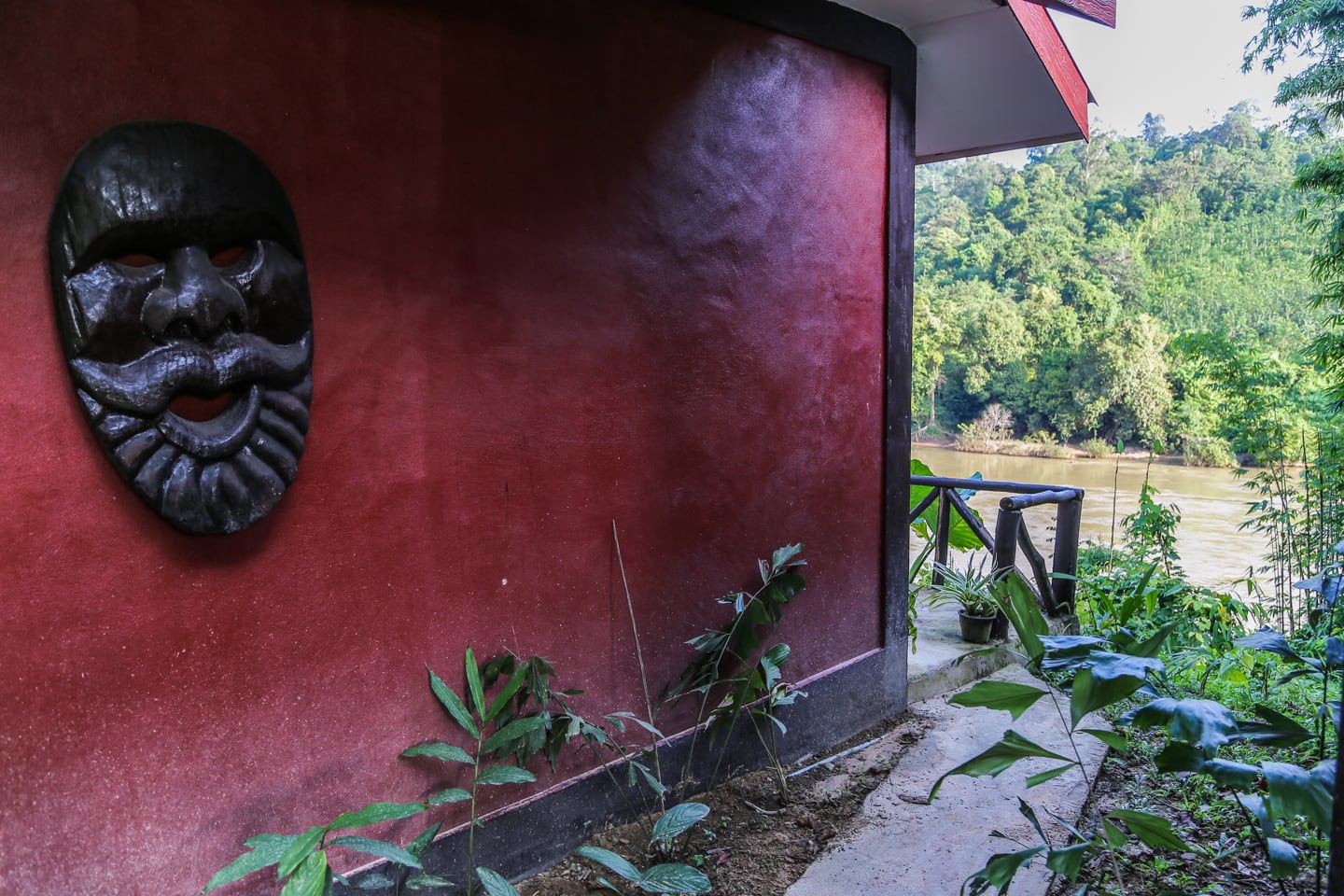
Up until very recently, Nam Lik was showing its age. In the past year, however, the owner has begun to renovate in a big way. Oftentimes, such renovations can be to the detriment of these places. Thankfully, it seems, in this case they’ve managed to strike a balance. Wooden bungalows have been replaced by sturdy cement ones. Units facing the river were completed last fall, while the bungalows on the hillside were in the process of being completed while we were there.
For a place like this, the bungalows are nicer than you might expect.
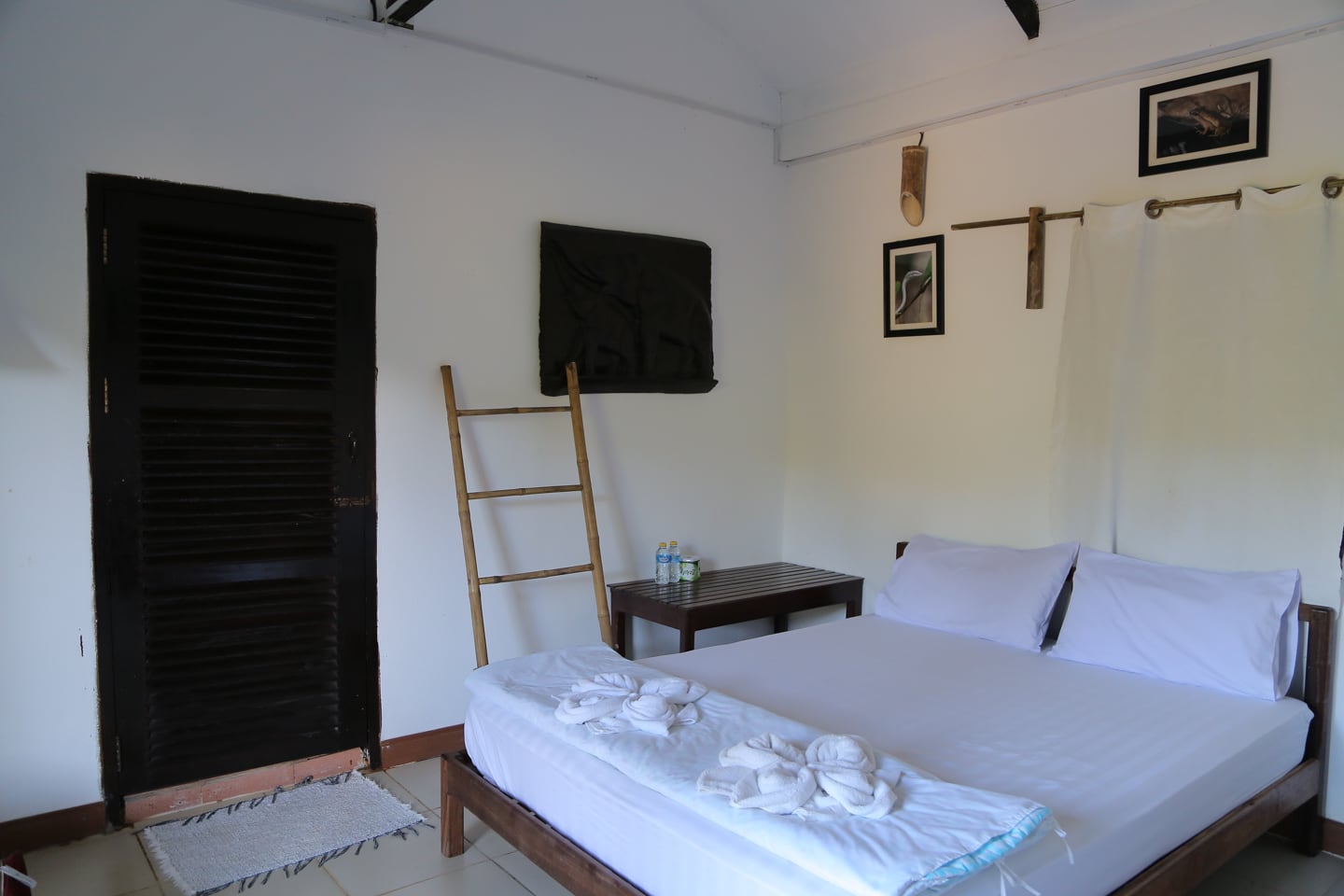
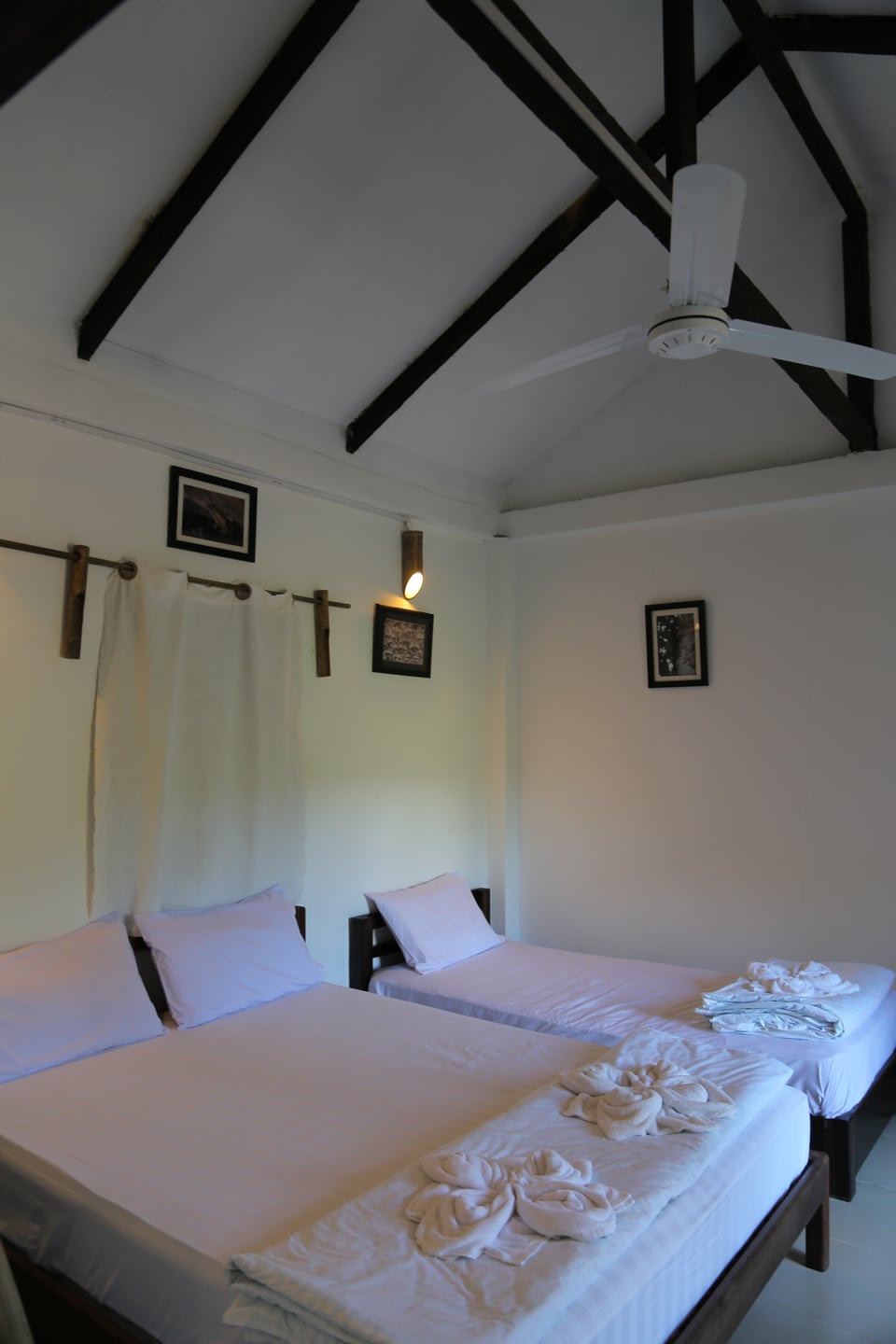
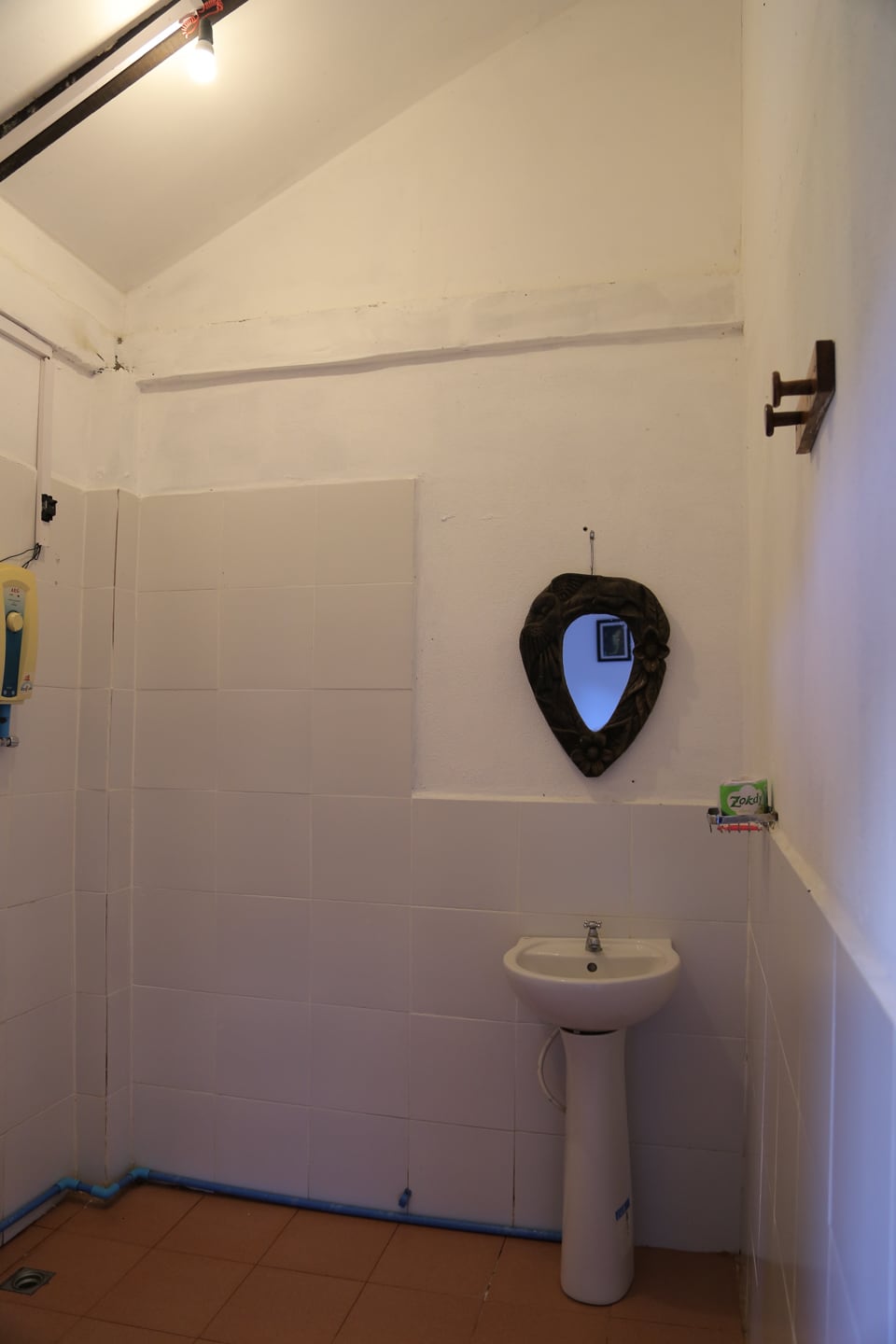
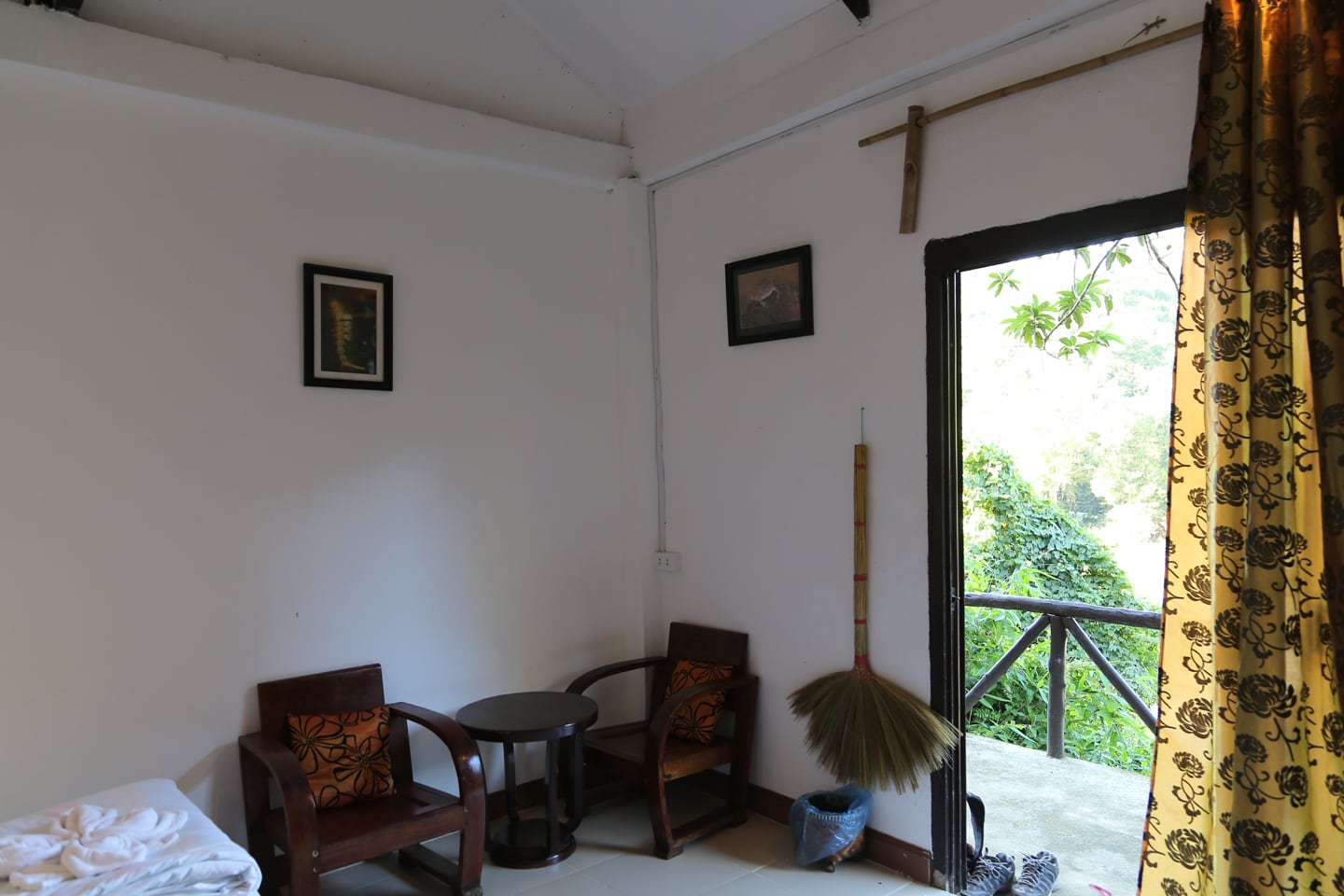
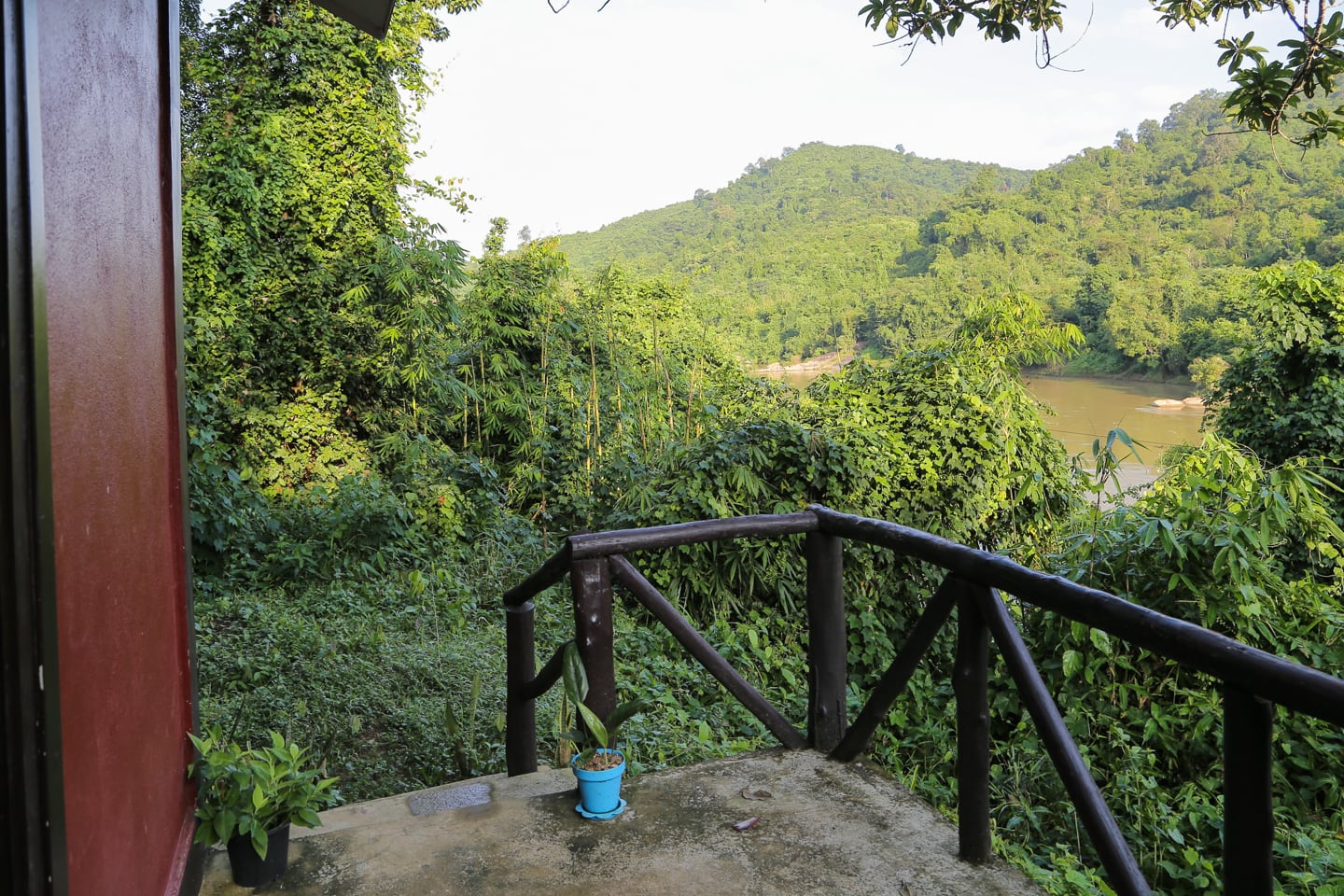
By our count, there are currently two single units and two family units facing the river. Ours and our guest, Britta’s, currently have the best view of the river from the front porch.
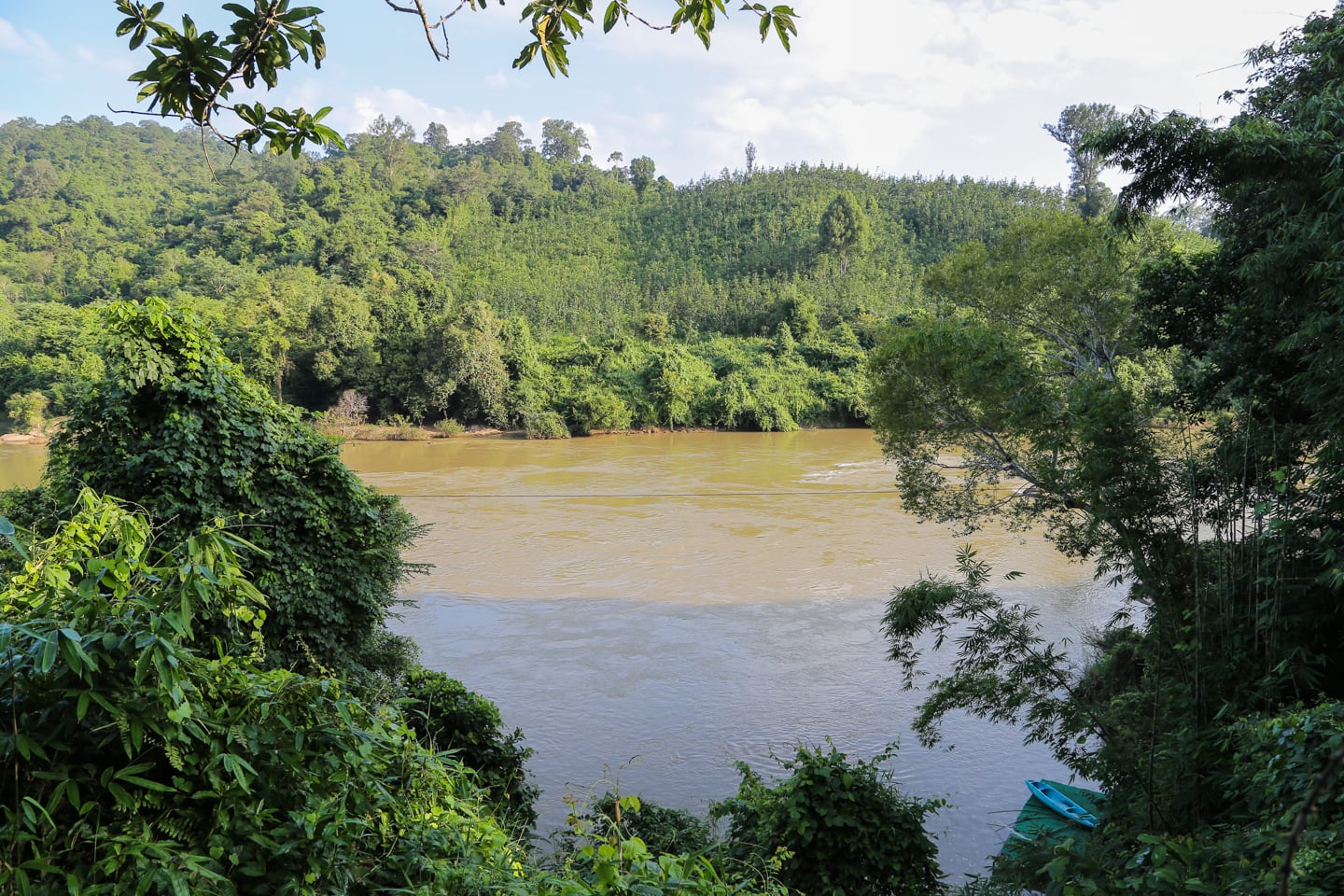
We are at the tale end of the rainy season, and consequently, all the rivers are swollen and muddy. When we were here last December, however, the river was much narrower sporting a gorgeous turquoise-tanzanite color. One of the river kayaks can be spotted down on the floating dock in the bottom-right-hand corner of the photo, though I wouldn’t want to battle the current this time of year.
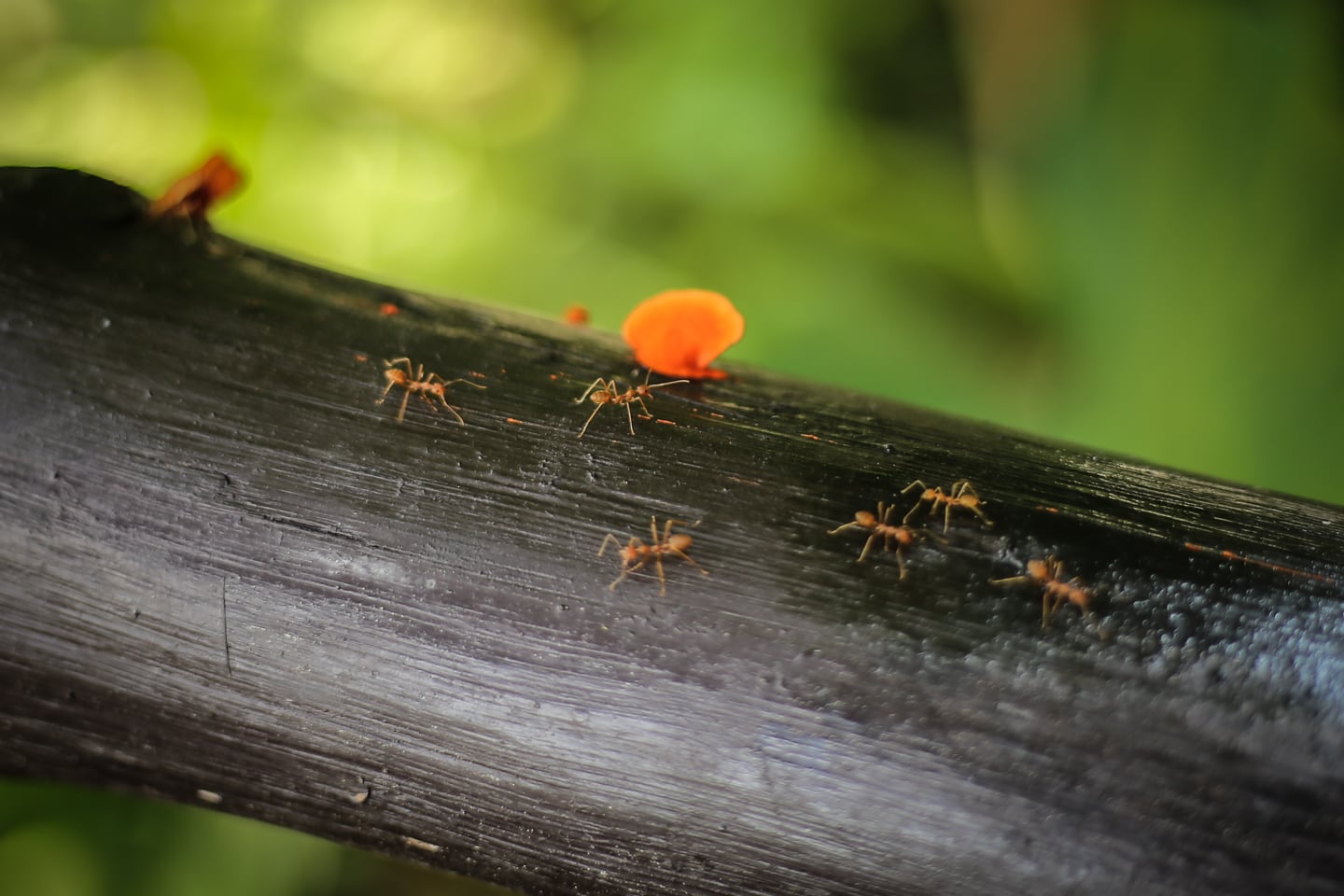
Ants as big as tree frogs are a common sight out here and are fascinating to watch—in addition to darting around tirelessly, they have the uncanny ability to triage injured ants, even healing/repairing the ones deemed revivable, and carrying off those not so lucky.
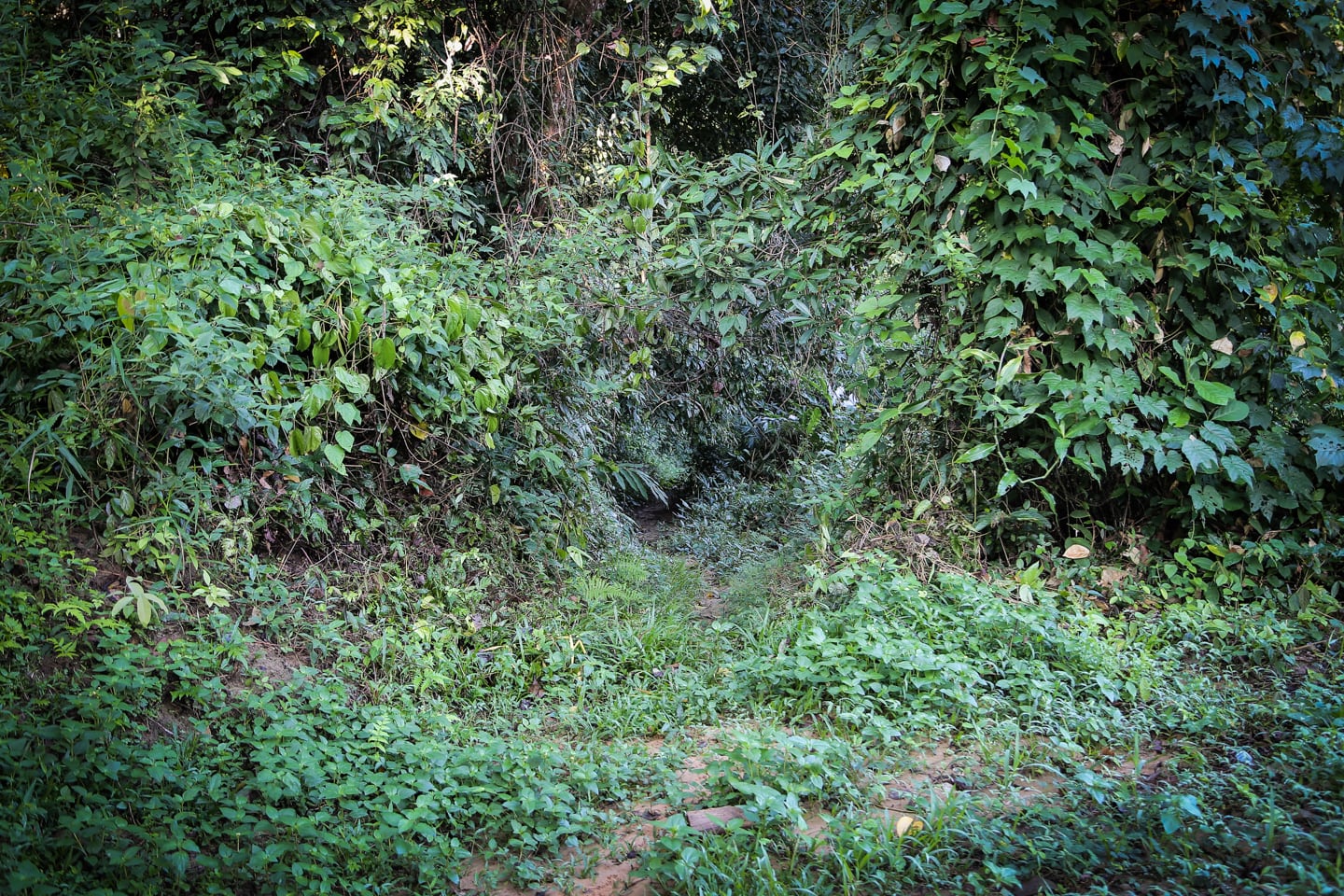
The edge of the jungle comes right up to the wall of our bungalow. Barely visible in the center of the photo is the start of the two-hour hiking trail circling the hill behind the the lodge.
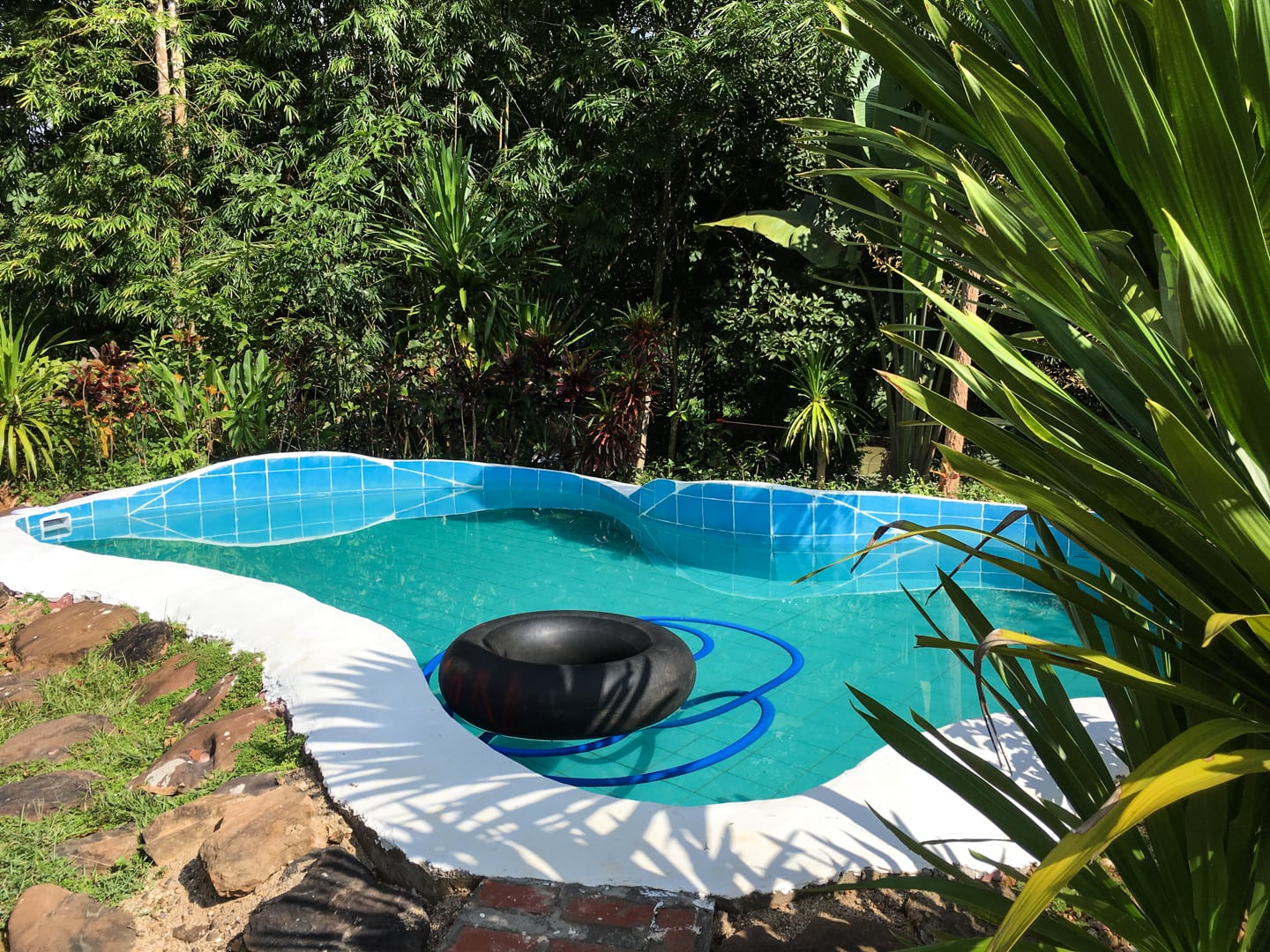
Nam Lik’s newest edition: a swimming pool. When they told us in December that they had plans to put a pool in adjacent to the parking area, we took the information with a grain of salt. But, sure enough, 10 months later, here it is, fully functional and well-maintained, even in green season.
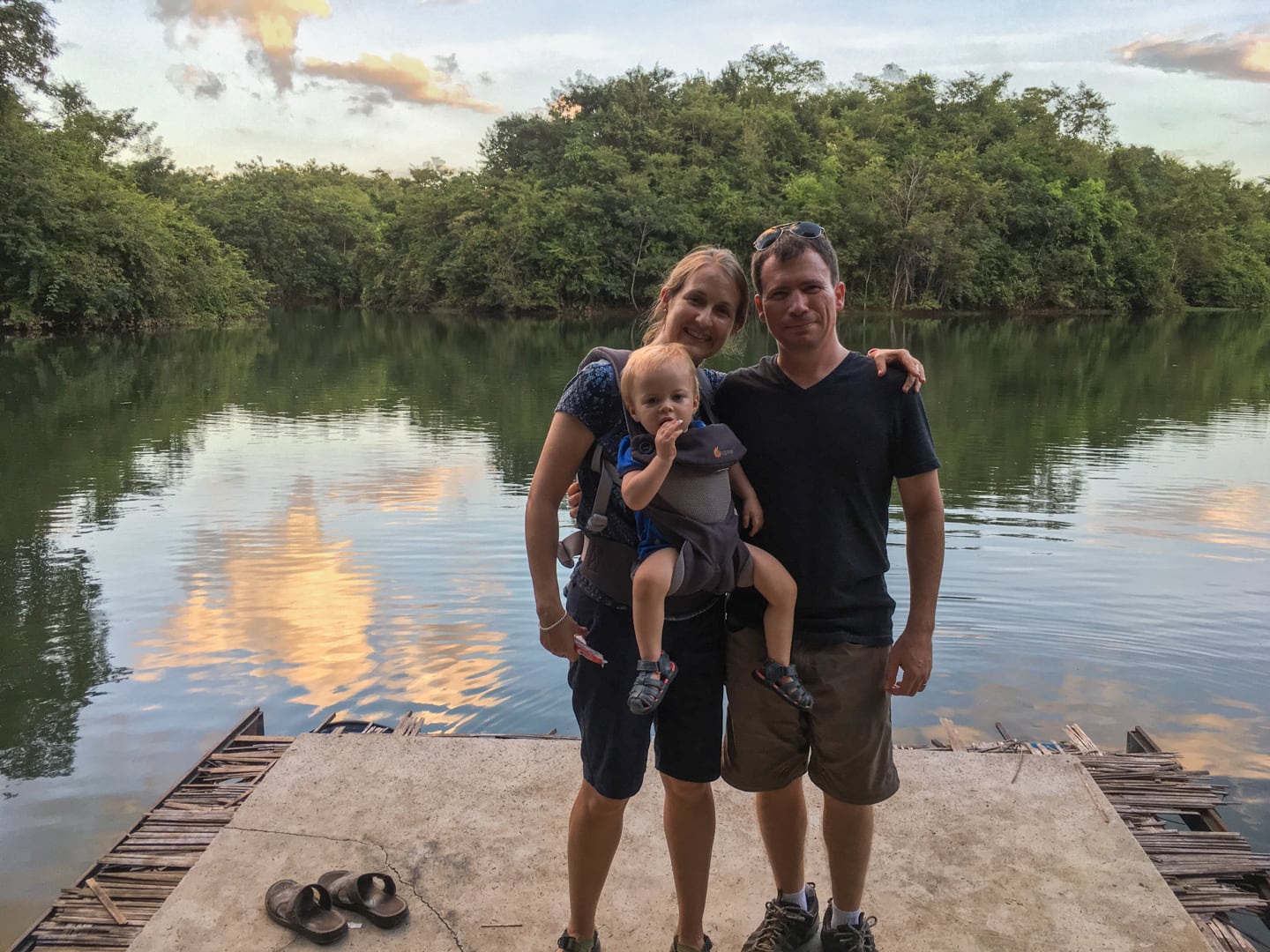
Before dinner, we took a walk around the eco village (as it’s called) including a quick jaunt down to the lake. It was very peaceful and I resolved at one point to spend some time kayaking on the lake. Maybe I can sneak out in the early morning, if Noe doesn’t keep us up half the night as he often does the first night in a new place.
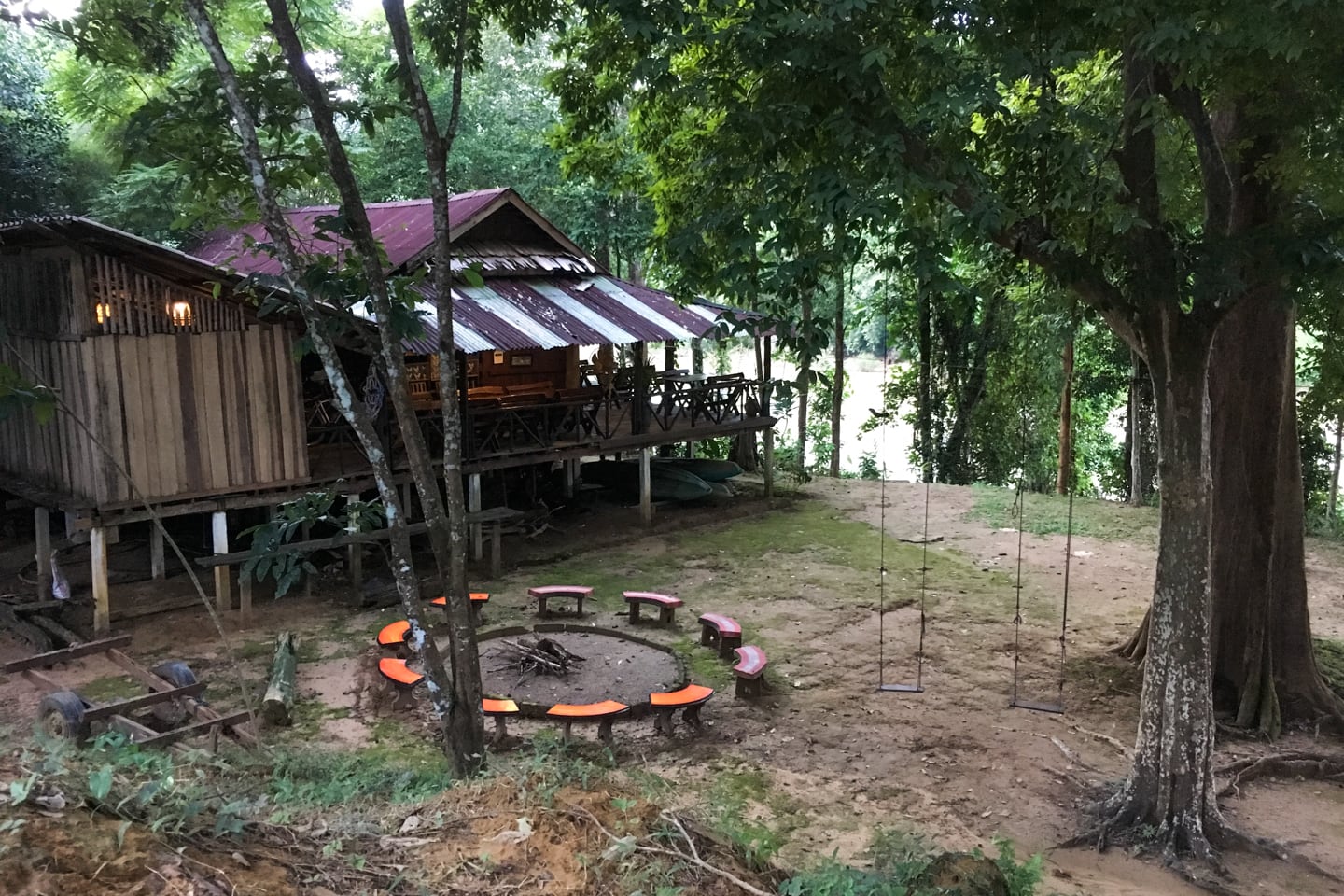
The main structure in the center of the property has to be my favorite aspect of the lodge. It’s obvious it has been changed very little over time and evokes a rustic, jungly, Robinson Crusoe feel, with its wrap-around rickety covered deck overlooking the river, and surrounded by zip lines, platforms, swings, and even a climbing tree.
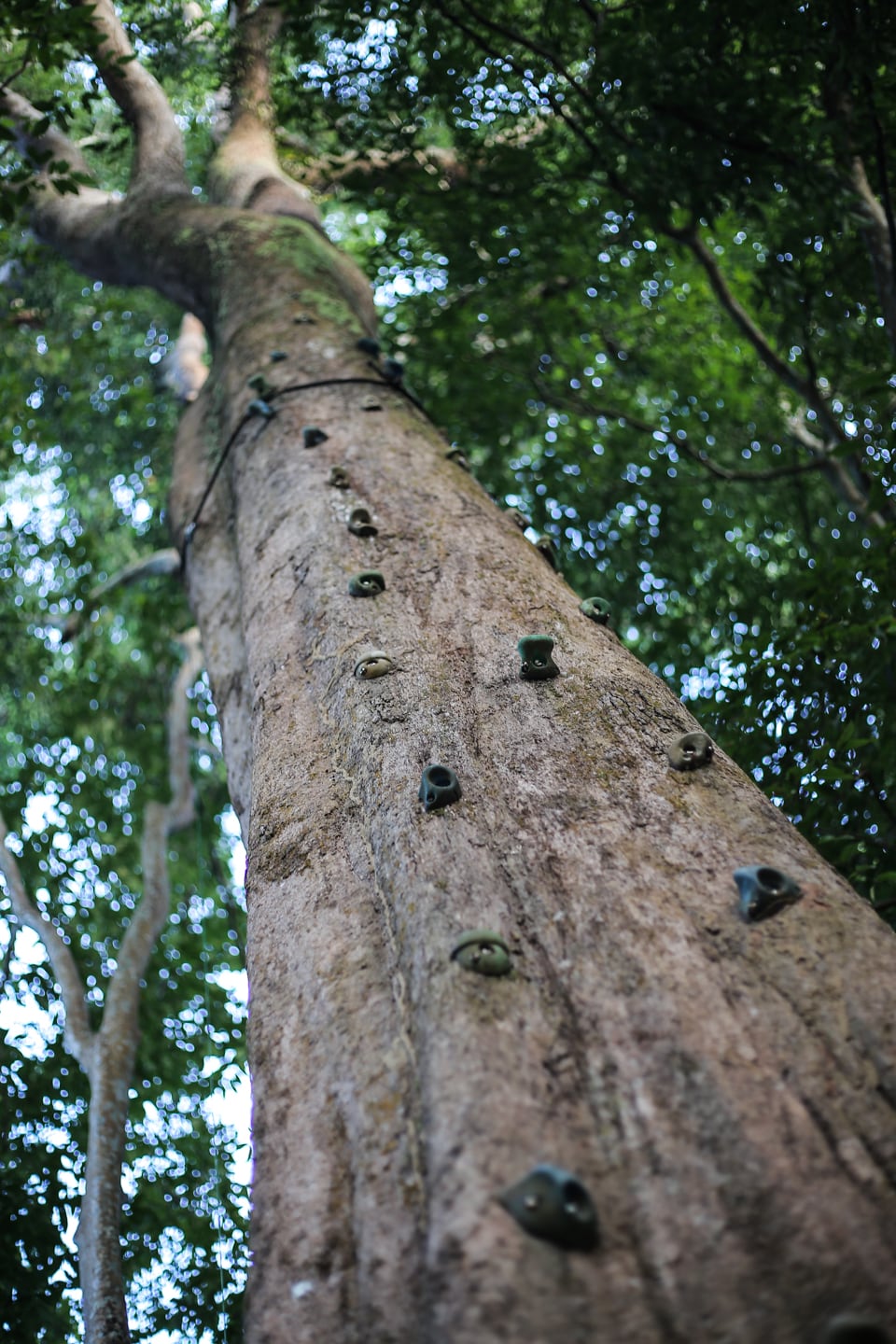
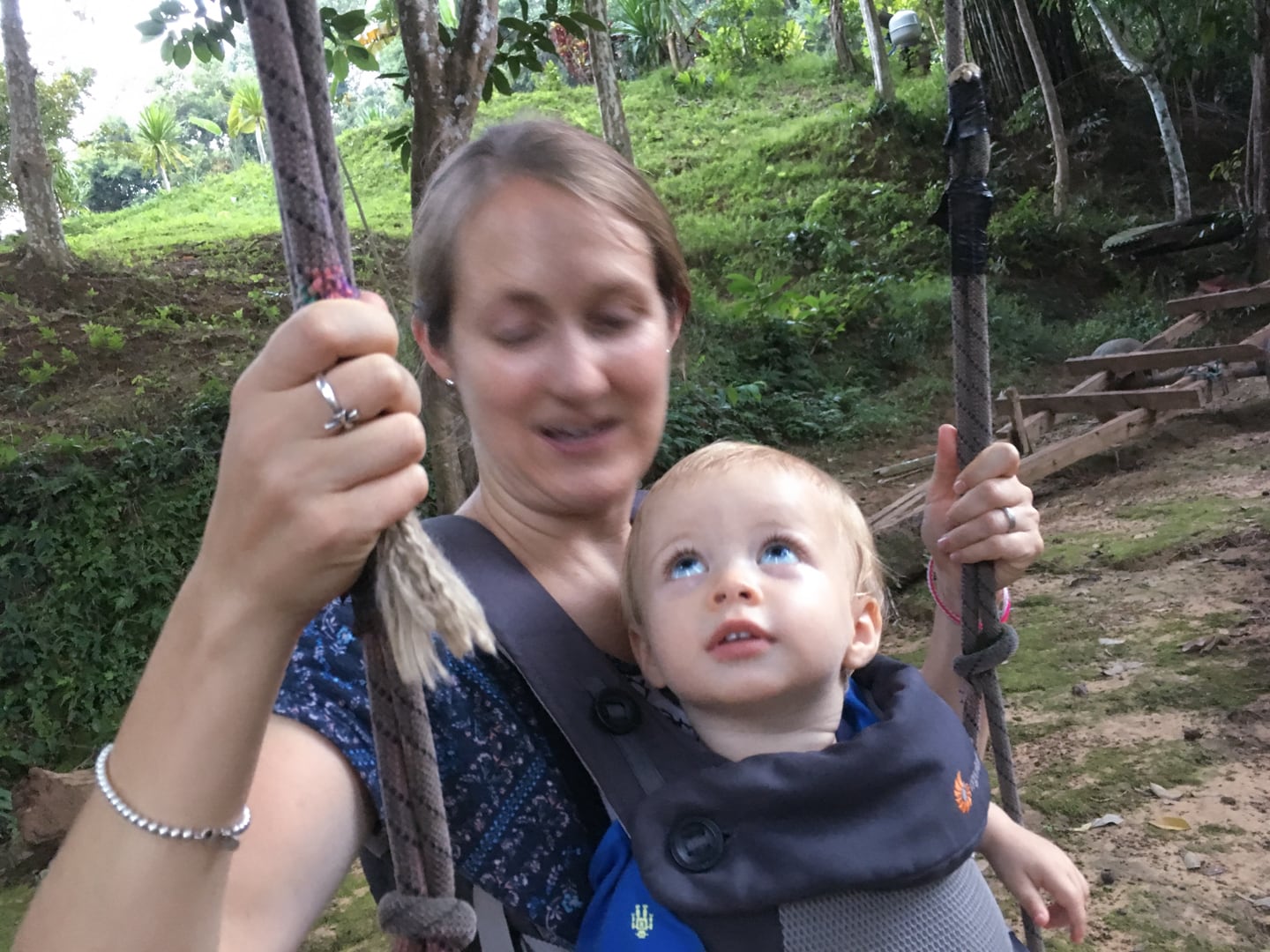
Lodging here is not the cheapest in Laos, but breakfast and all activities (excluding zip line) were included in the price, and recent renovations seem to further justify the $36/night we paid.
The food, however, seems overpriced to me, and Lori and I could have most certainly shared one plate. There’s no menu—the choices are something Lao or something French, though it’s up to the cook who ultimately decides what that will actually be. The French food we had the next day was delicious, but I found the Lao food to be uncharacteristically bland (though to their credit the food tasted very fresh and healthy and the portions were very generous).
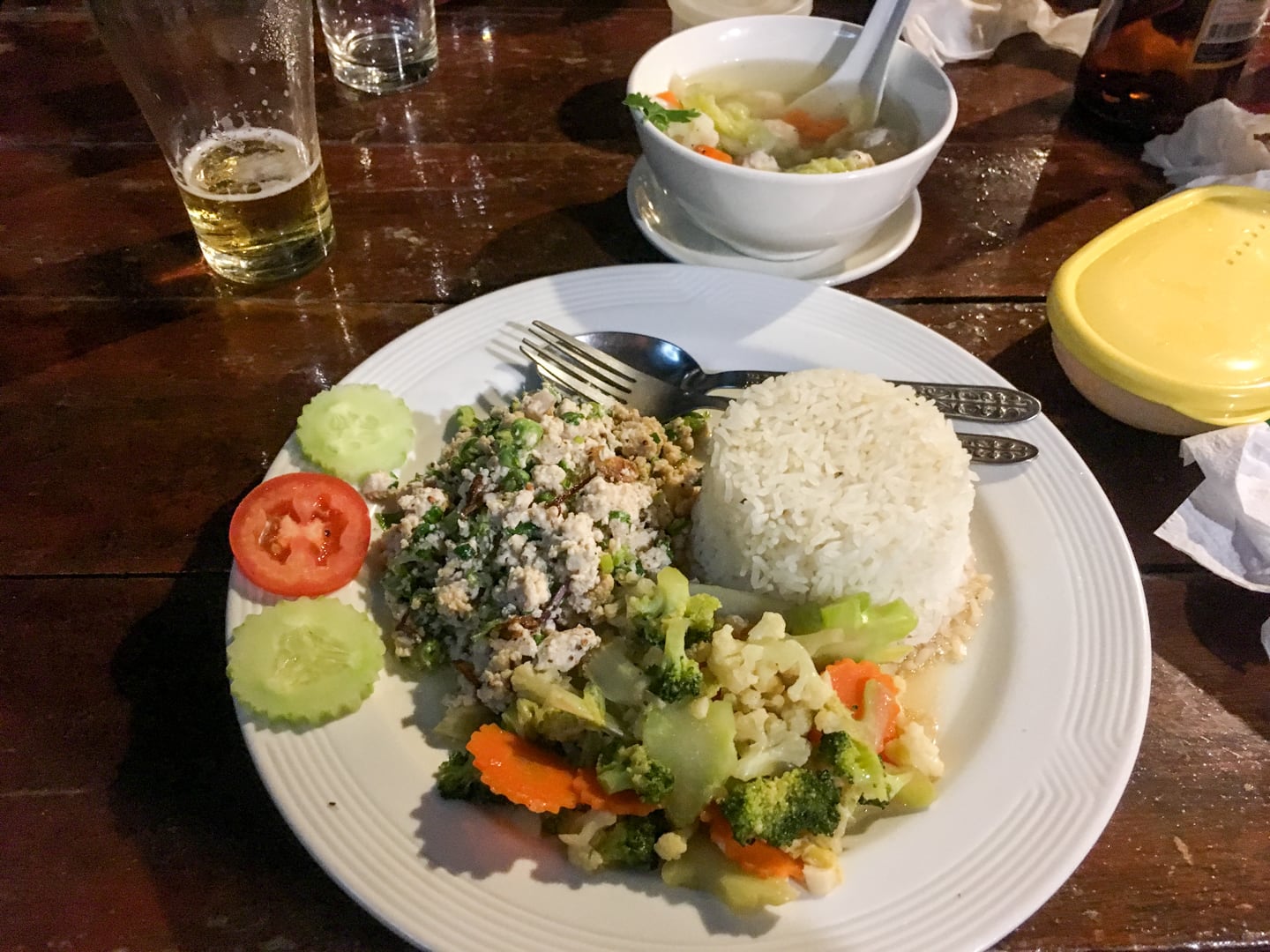
Given that there are no other nearby options for eating (and outside food is not allowed on the premises), you’re pretty much at the mercy of the folks at Nam Lik. For one or two nights, we were okay with paying the premium, but I’m not sure I’d be able to bring myself to spend that kind of money at such a place for an entire week.
It’s interesting to me what constitutes an “eco lodge” in various parts of the world. In Southern and East Africa, the term seems to carry the most weight of any region I’ve been. You can generally bet on solar power, rainwater catchment systems, composting toilets, and foods grown on-site or sourced locally. Undoubtedly, this is a high bar to meet and I’ve yet to stay in eco lodges in Southeast Asia or Central America that come close to this ideal. In Laos, the term eco lodge seems to have more to do with the level of integration (and relationship) within a village community, and accommodation in a rustic and natural setting. Of course, I’d love to see the African model replicated in other parts of the world, and even a more universally agreed-upon definition and usage of the term “eco” in the hospitality industry, just as it would be great to see an internationally agreed upon definition of the term “organic.”
Regardless, the draw of places like Nam Lik is having the chance to unplug and unwind in a rustic, natural setting, off the tourist trail and away from the trappings of modern life. In Laos—one of the least developed, least industrialized countries in East Asia—you wouldn’t think that would be difficult to achieve. But here in the capital region, we’ve found it far more challenging than we ever dreamed. For its few disadvantages, Nam Lik is a welcome respite—of funky, idyllic, rustic chill,—world’s apart from the densely packed and contrived backpacker bungalow blocks of Vang Vieng and the upscale resorts becoming increasingly common across a rapidly changing country.
